Gorgeous historical structures are regarded as one of a city or region’s top tourist attractions. With a 200-year history as the capital, Tehran has seized the initiative from rival cities and been home to opulent homes. The recent-era palaces and museums in Tehran welcome millions of Iranian and foreign visitors each year. One of Tehran’s most stunning structures, Golestan Palace served as the setting for some of Iran’s most significant historical occurrences throughout the Qajar era.
The History of Golestan Palace
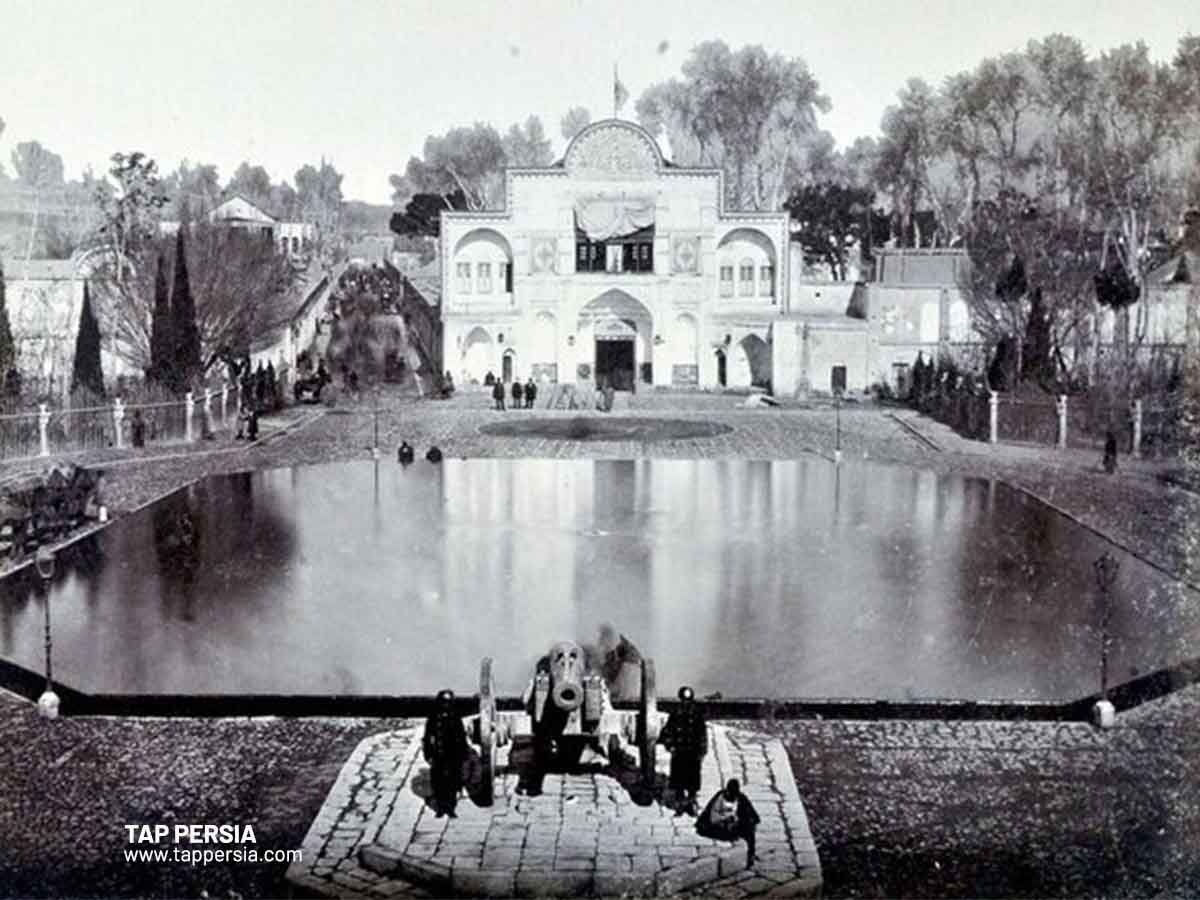
Golestan Palace is said to have a long history that dates back to the reign of (1588–1629) in historical documents and the travelogue; nonetheless, the Qajar era is this palace’s most important historical period (1789-1925). Agha Mohamad Khan Qajar was enthroned in 1789 after seizing power in Lotf Ali Khan Zand and choosing to establish Tehran his capital. This choice gave the royal stronghold of Golestan a twofold boost in status.
The area is today known as the Golestan Historical Museum Palace, and it was once Shah Abbas Safavid’s imperial residence (r. 1588 – 1629). Once, Tehran was just a little settlement close to Rey, a legendary city. The Safavid rulers first treated Tehran with special consideration due to its pleasant climate and proximity to what were considered to be summer resorts, Lavasan and Shemiranat. This method was used to build a fortress in Iran that was surrounded by plane trees.
After the Afshari and Safavid eras came to an end, during the Zand period, a monarch by the name of Karim Khan would occasionally use this building. As a result, a portion of it was built and is now known as Karim Khani Nook or Khalvat-e Karim Khani. As Agha Mohammad Khan ascended to power and the Qajar empire was created, Tehran became Iran’s capital. The rulers’ primary residence at this period was the royal fortress. Each of the Qajar rulers’ coronation and condolence rituals was held in this location.
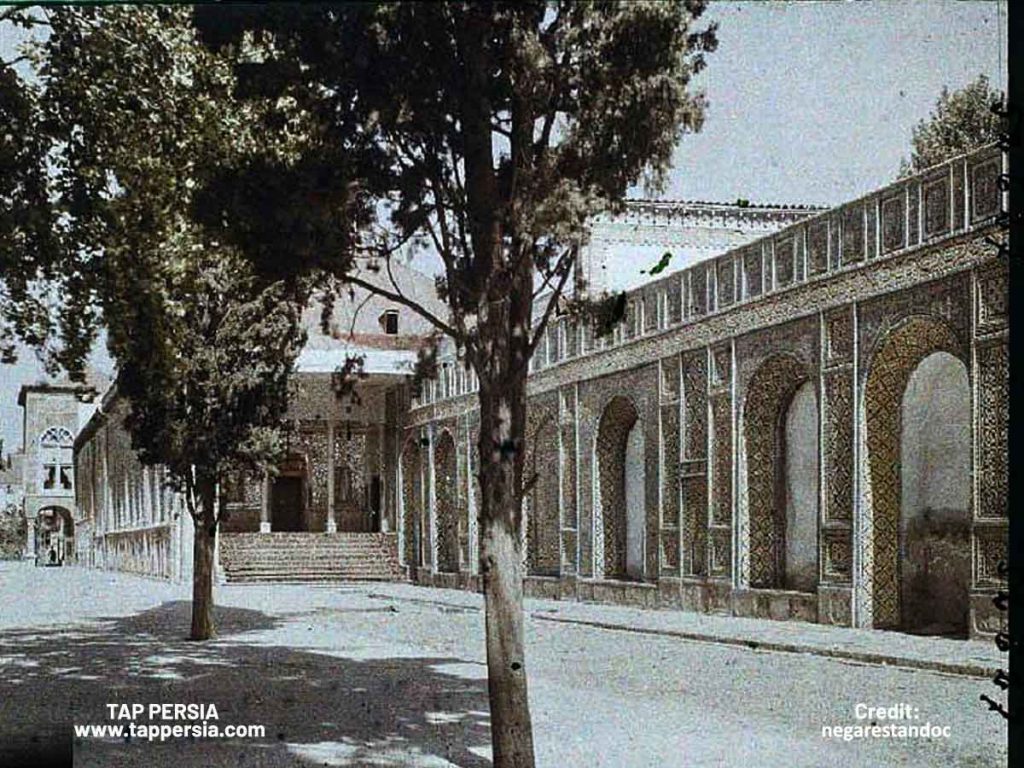
While the Golestan Palace is a magnificent example of Iran’s architectural splendor, it’s just one of the many historical sites that adorn the country. To explore the vast array of Iran’s historical architecture sites, delve into this comprehensive guide that takes you through the rich tapestry of Iran’s architectural heritage.
Opening Hours
The largest Iranian palace, Golestan Palace, is accessible seven days a week from 9 A.M. to 4 P.M. Yet because it will be less busy during the weekdays rather than on Thursdays and Fridays, it is preferable to go on those days.
Tickets Prices for Foreign Visitors
There are 12 structures in all in Golestan Palace. Entrance fees are necessary for each of them. So, it’s best to plan your visits to certain buildings in advance. No matter how you look, you must pay the primary admission price of 1,000,000 RLS. The main Hall alone has a 2,000 RLS admission cost, while 11 of those 12 structures have a 500,000 RS ticket need.
The ticket boot may be used to gain information about the various Golestan Palace Museum locations.
Photography and video in the open air are permitted. You cannot take pictures of the galleries or structures. It is not allowed to use commercial photographs. There are no approved camera stands.
Exploring the Architectural Features of Golestan Palace: A Fusion of Persian and European Styles
It is a 400-year-old royal mansion distinguished by a synthesis of Persian architecture, the adoption of European building techniques, and the use of cast iron. The palace, which was named a UNESCO World Heritage Site in 2015, exhibits examples of the synthetic and Persian-European style, which was a defining feature of Iranian art and architecture in the late nineteenth and early twentieth centuries.
The structure served as the Safavid dynasty’s royal home around the middle of the sixteenth century. King Tahmasb oversaw the building of the first defensive wall surrounding Tehran in the 1550s because safeguarding the royal fortress was of utmost significance. Later on, the Zand dynasty (1750–1794) gave the architect Ustad Ghulam Reza Tabrizi a mandate to renovate the Palace. He also created an audience chamber and various other structures.
The Must-See Highlights of Golestan Palace
We will go through a few of the fascinating sights in this captivating palace below:
1.Shams-ol-Emareh (Edifice of the Sun)



The Golestan Palace’s most beautiful buildings are found there. Nasser-ol-Din Shah got the notion to construct a lofty edifice from pictures of European architecture and before he met his first European. The monarch wanted a structure with expansive views of the city. The Shams-ol-Emareh was built according to a design by Moayer-ol-Mamalek and was finished in 1867. Master Ali Mohammad Kashi designed the building. Two towers in the structure are the same. Intricate tile work, elegant windows, and numerous arches may be seen on the outside views. Iranian and European styles of architecture are combined in this structure.
2.Talar-e Aineh (Hall of Mirror)
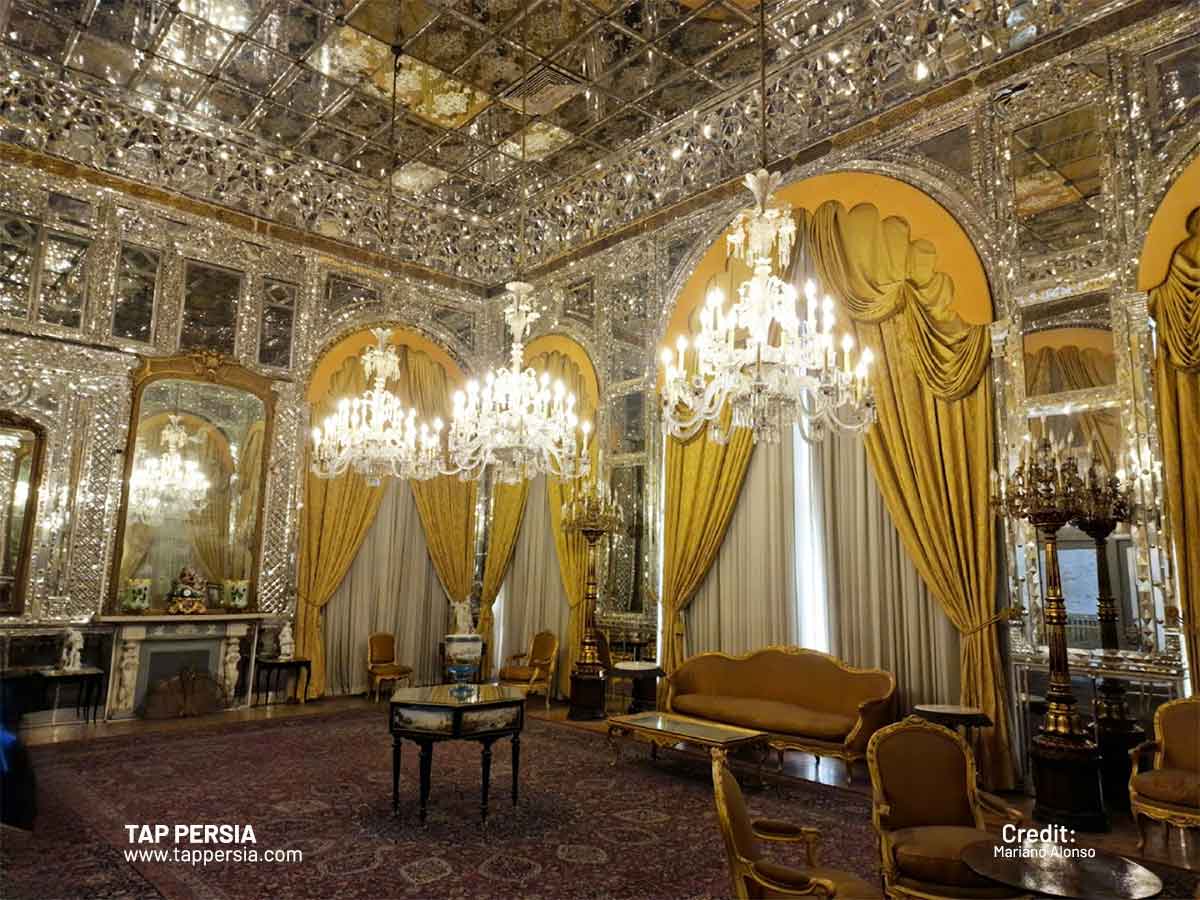
The Palace Hall’s most popular room is this one. This rather little building is well known with its incredible mirror craftsmanship. Haj Abdoul Hossein Memar bashi was the architect of the Hall (Sanie-ol-Molk). The designer received advice from Yahaya Khan Moetamed-ol-Molk, the Ministry of Architecture.
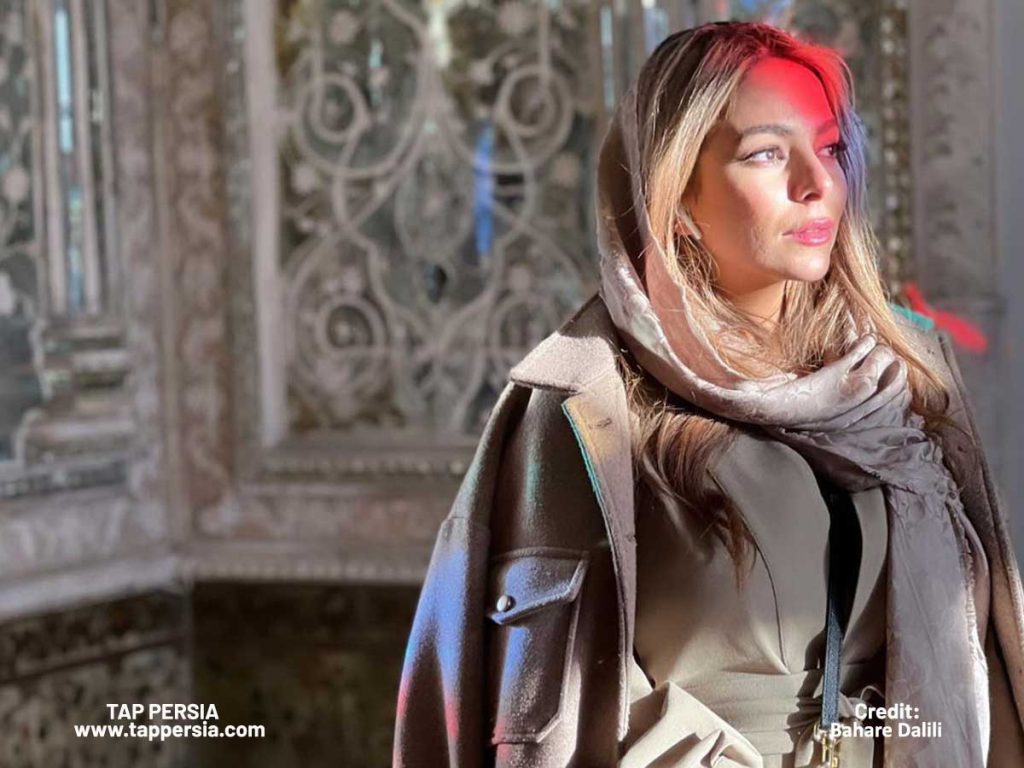
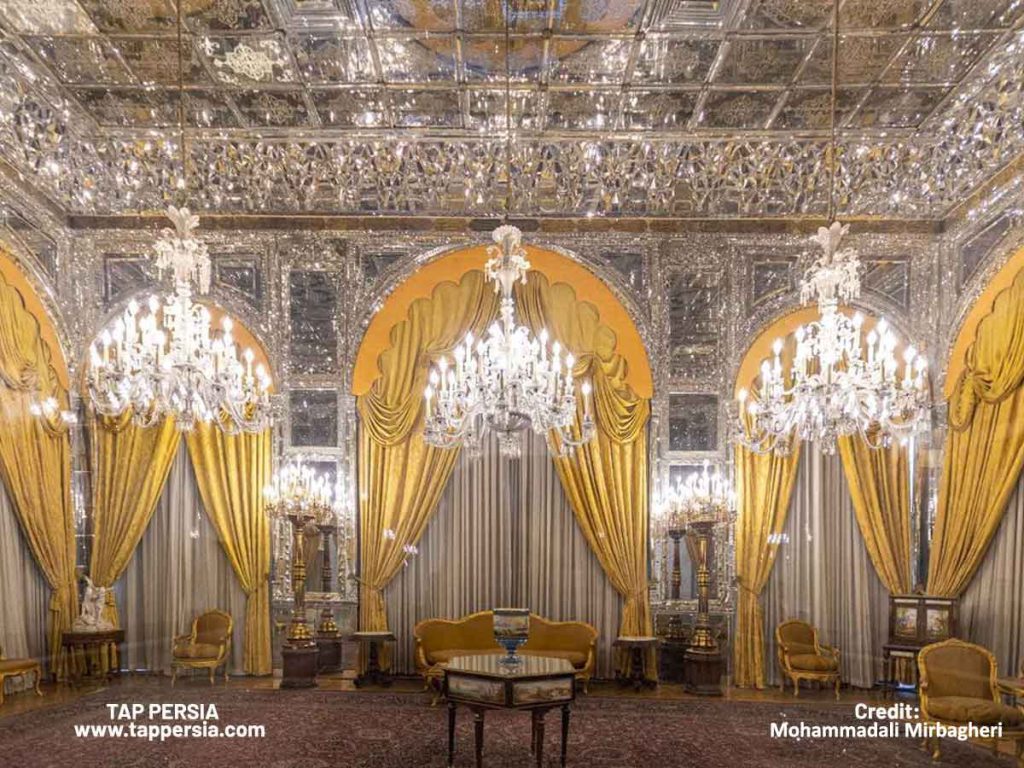
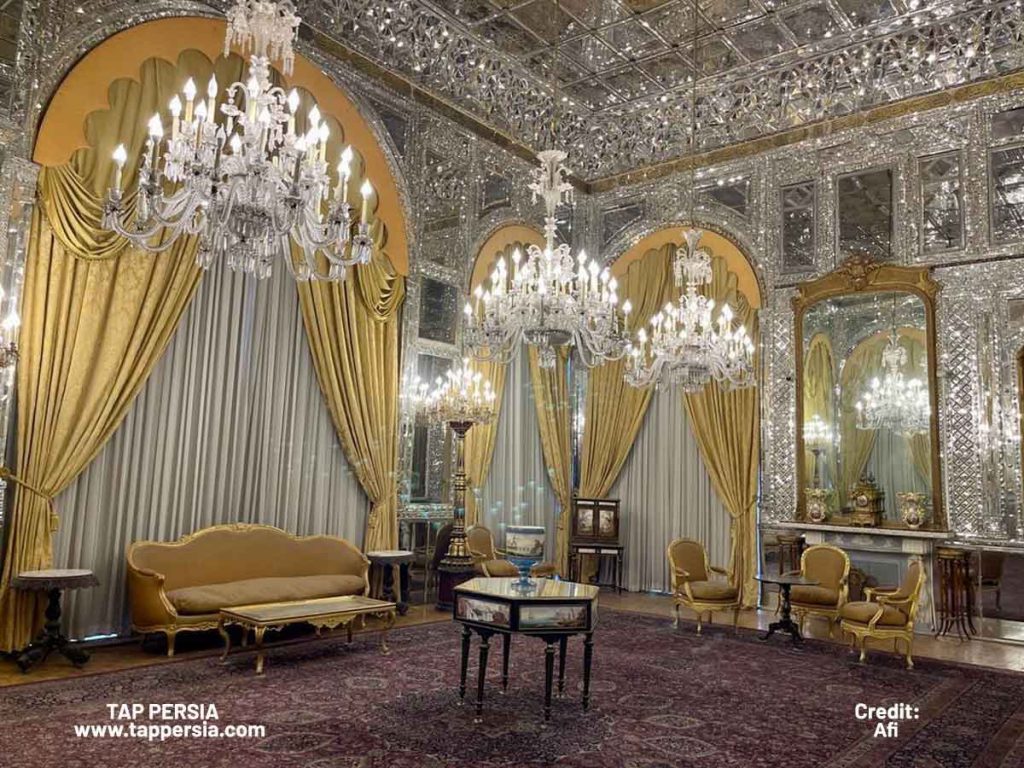
Nasser-ol-Din Shah received priceless presents from Sultan Abdoulhamid of the Ottoman Empire. These presents, it was said, were many and sufficient to fill a fortress. With these presents, the Qajar emperor was overjoyed. He made the decision to build an exhibit hall inside Golestan Palace that was suitable for these presents. The building’s center hall was big enough to accommodate the carpet that Sultan Abdoulhamid provided, and it is said that Nasser-ol-Din Shah personally designed it.
3.Abyaze (White) Palace
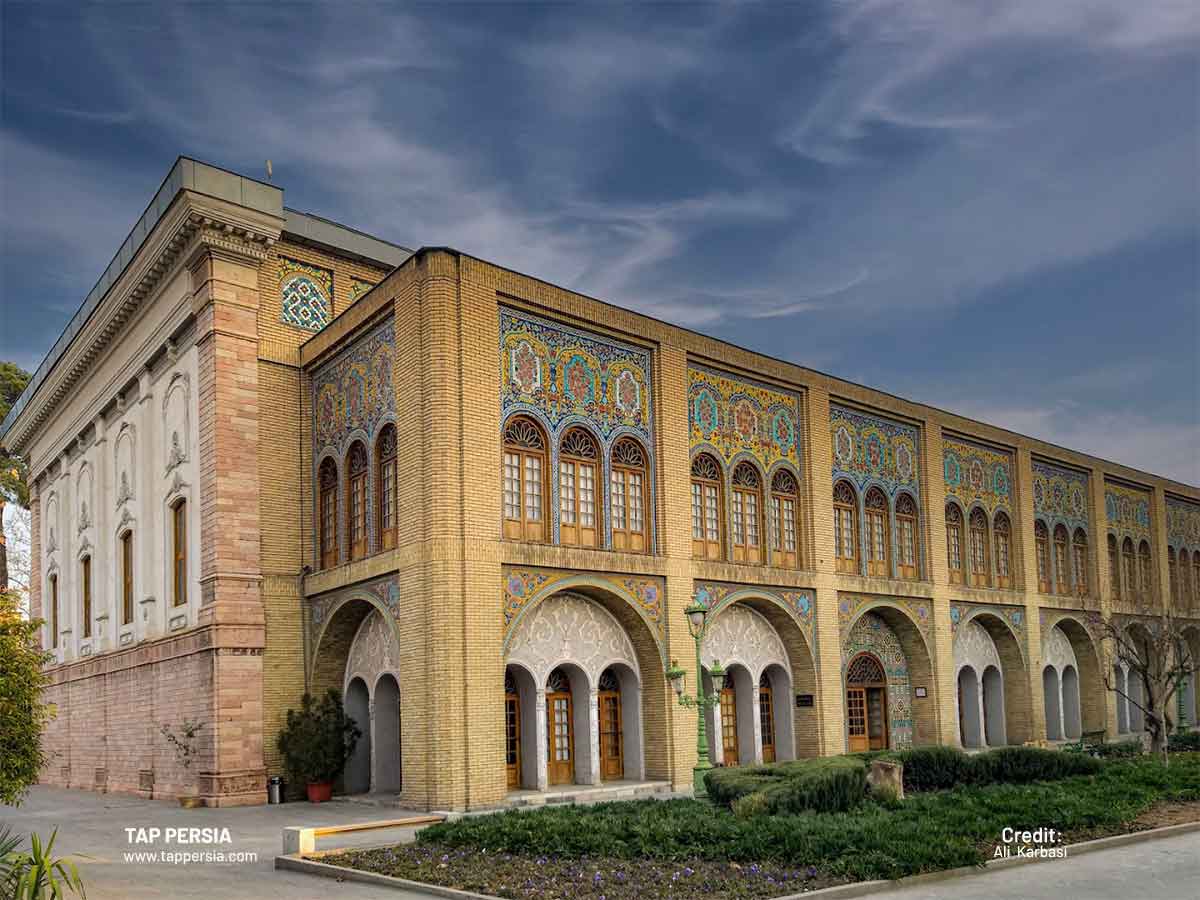
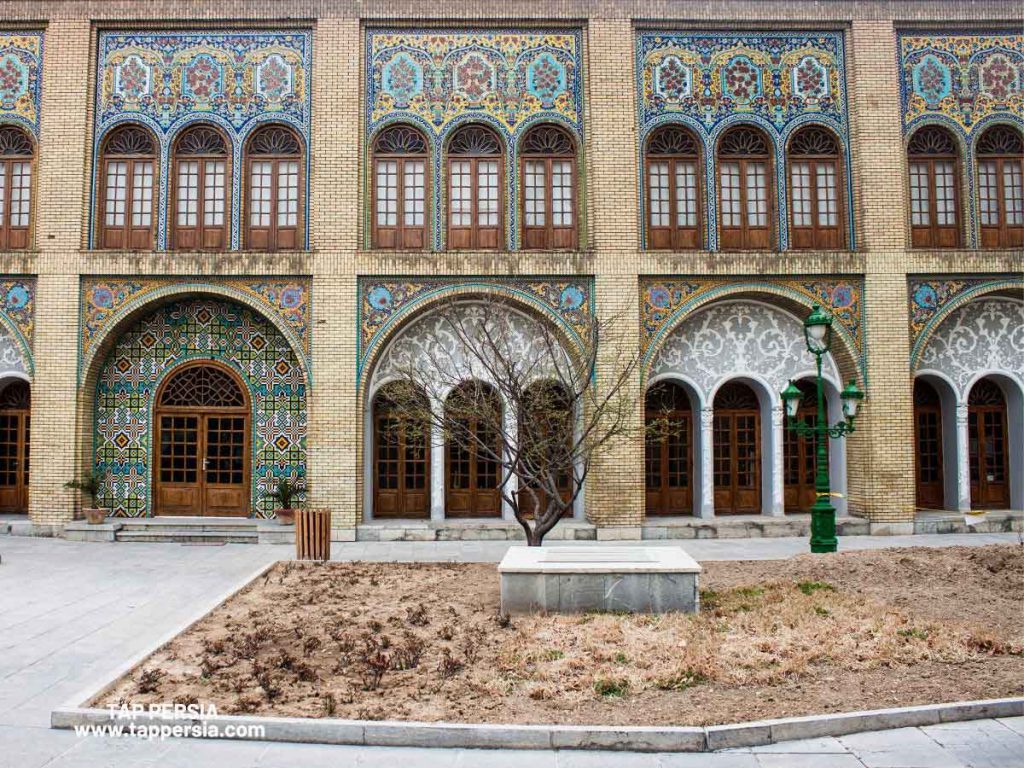
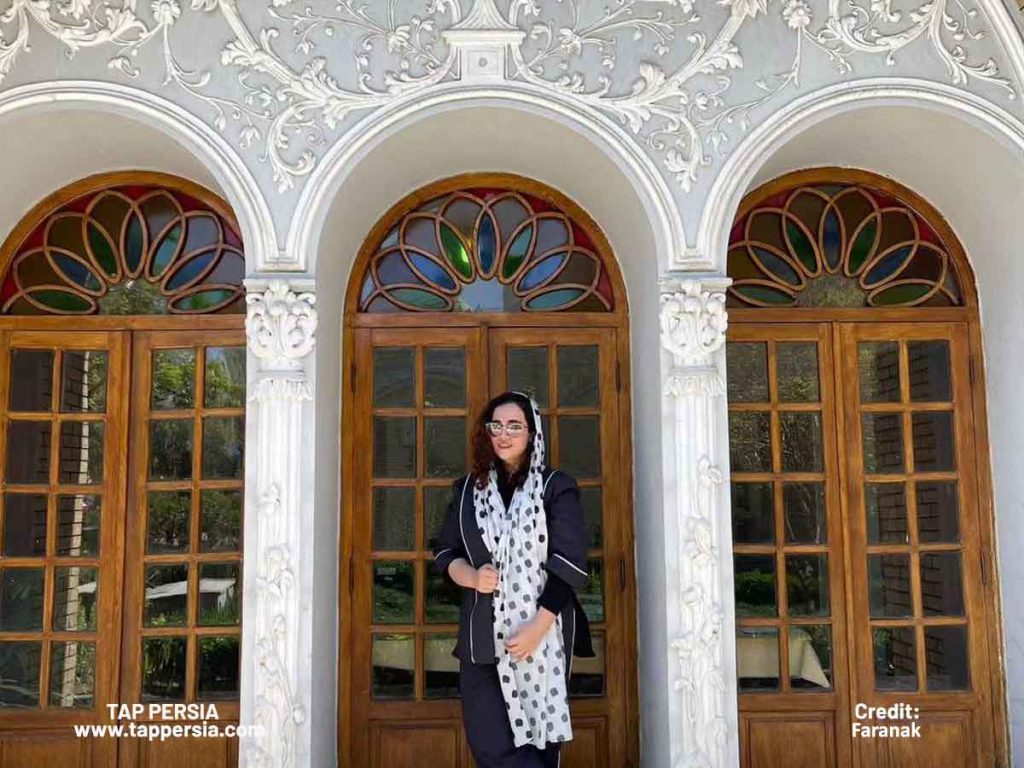
The Abyaze (White) Palace, which was finished in 1883, is currently home to one of Iran’s most fascinating zoological museums. Together with a display of folk art, there is a vivid exhibition of traditional Iranian clothing.
4.Emarat Badgir (Building of the Wind Towers)
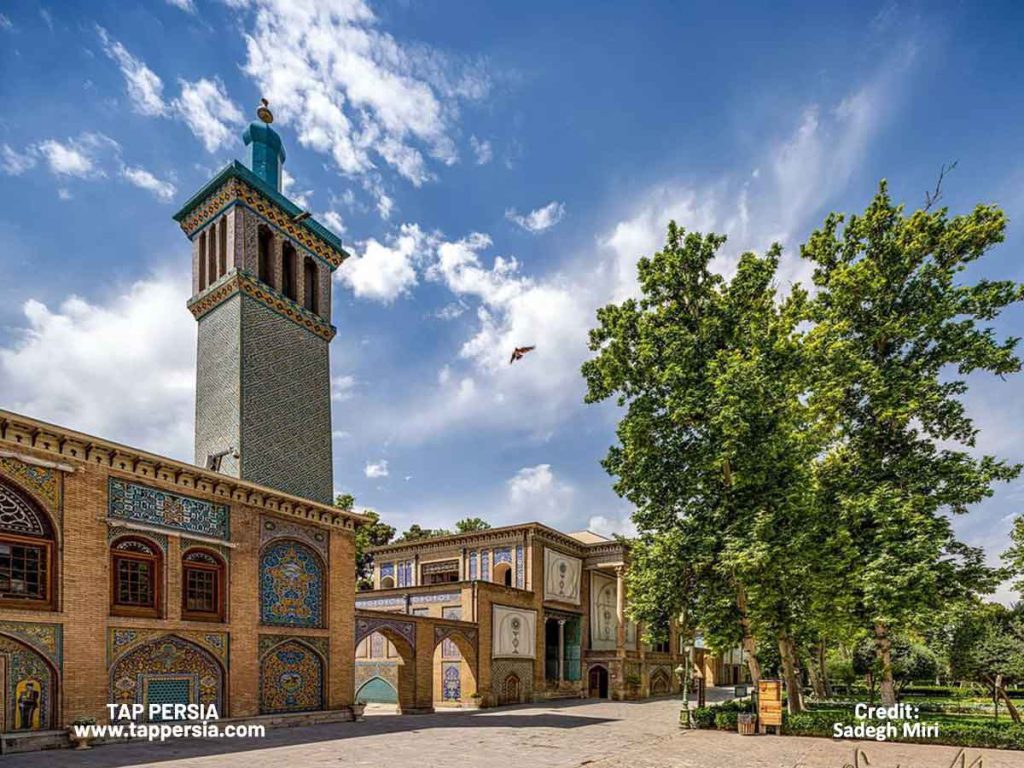
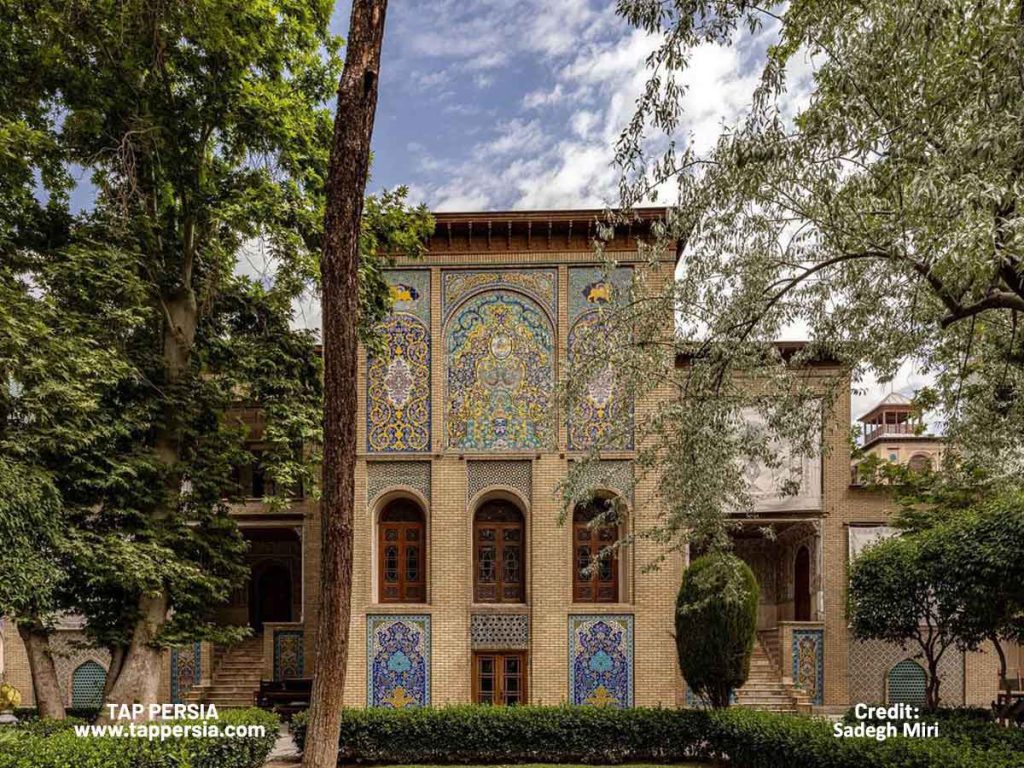
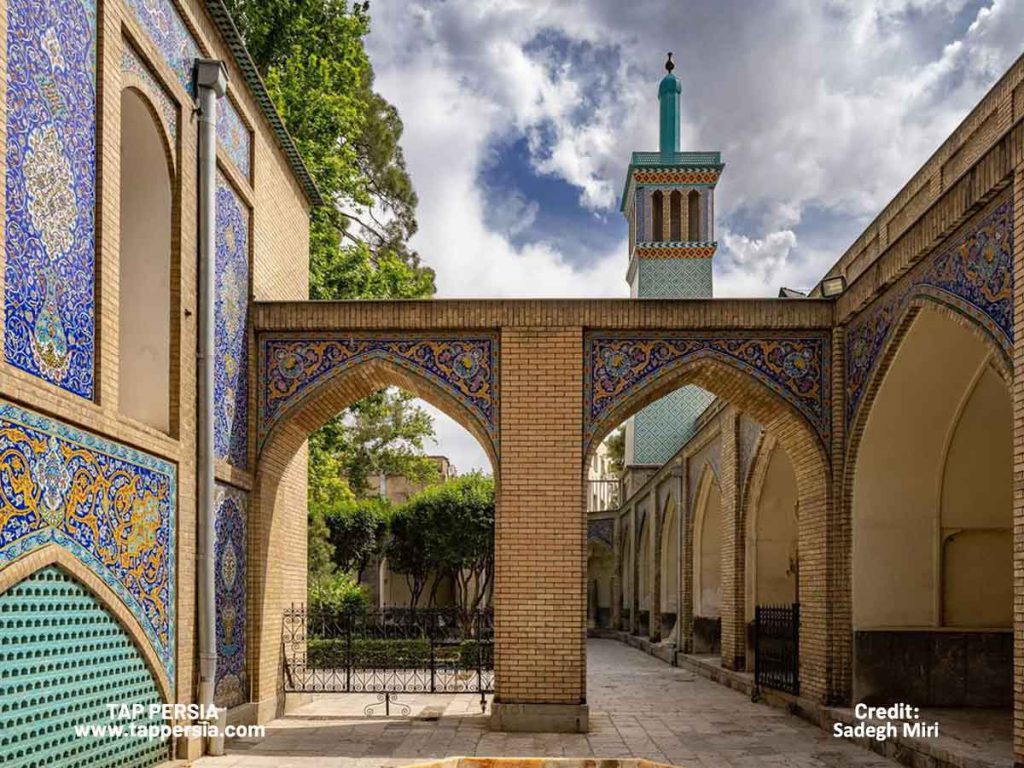
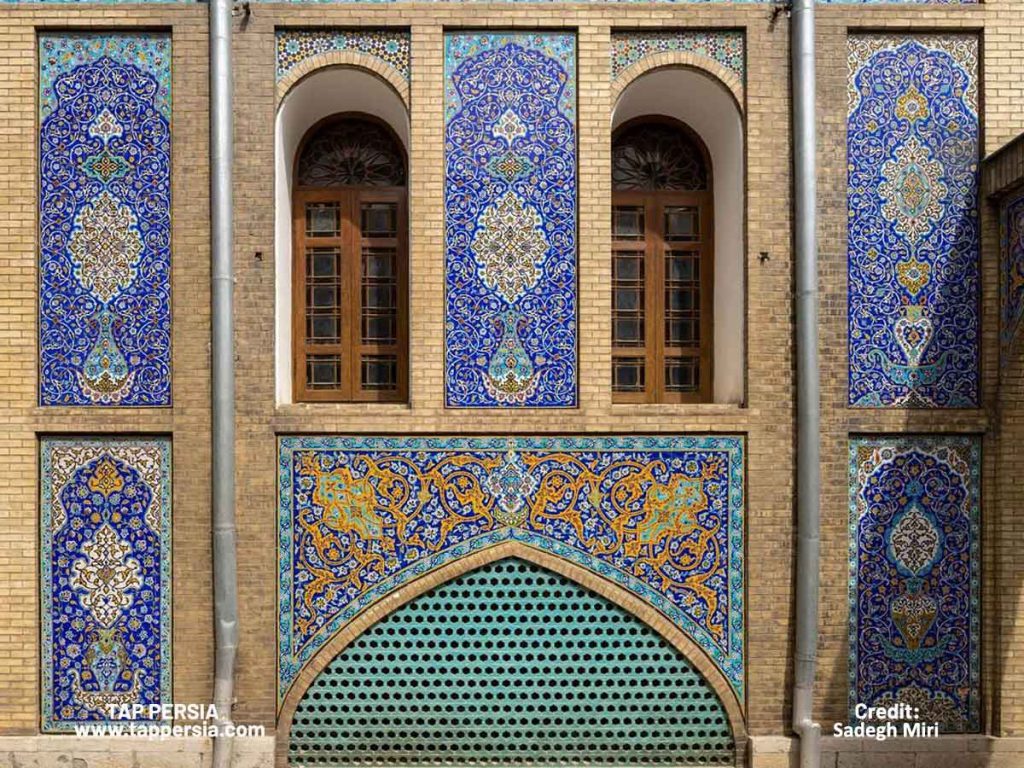
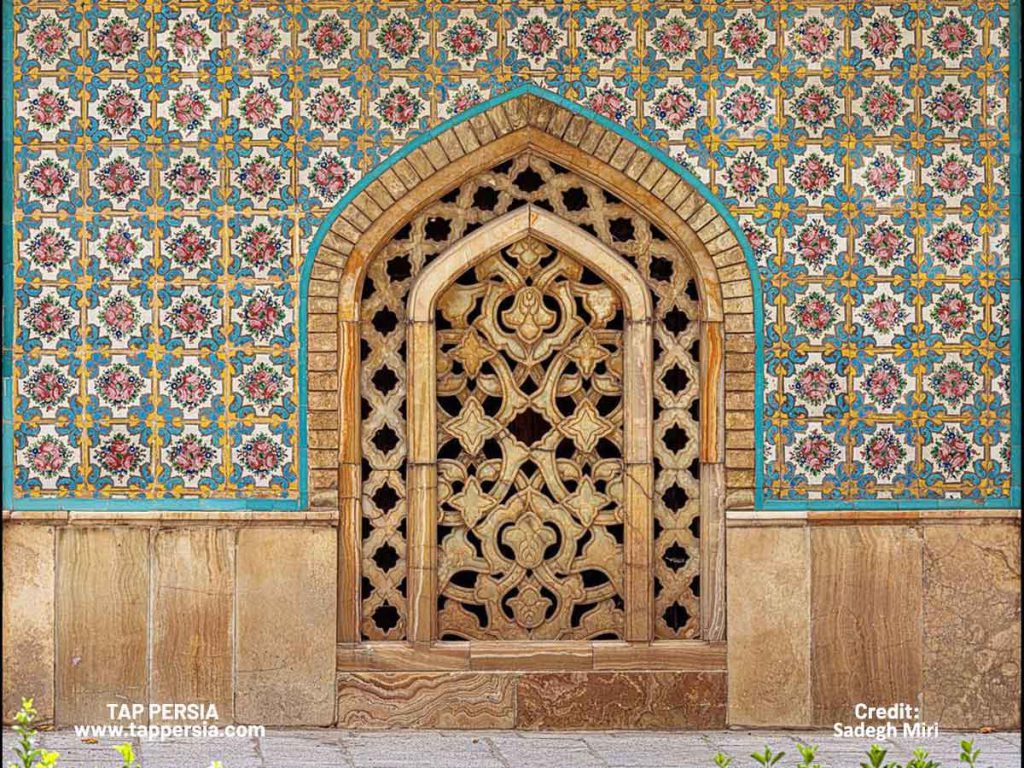
It was built during the reign of Fath Ali Shah (circa 1806). Under Nasser-ol-Din Shah’s rule, the structure received significant repairs, including structural adjustments. Before the restorations, the original building is seen in a painting by Mahmood Khan Malek-ol-Shoara.
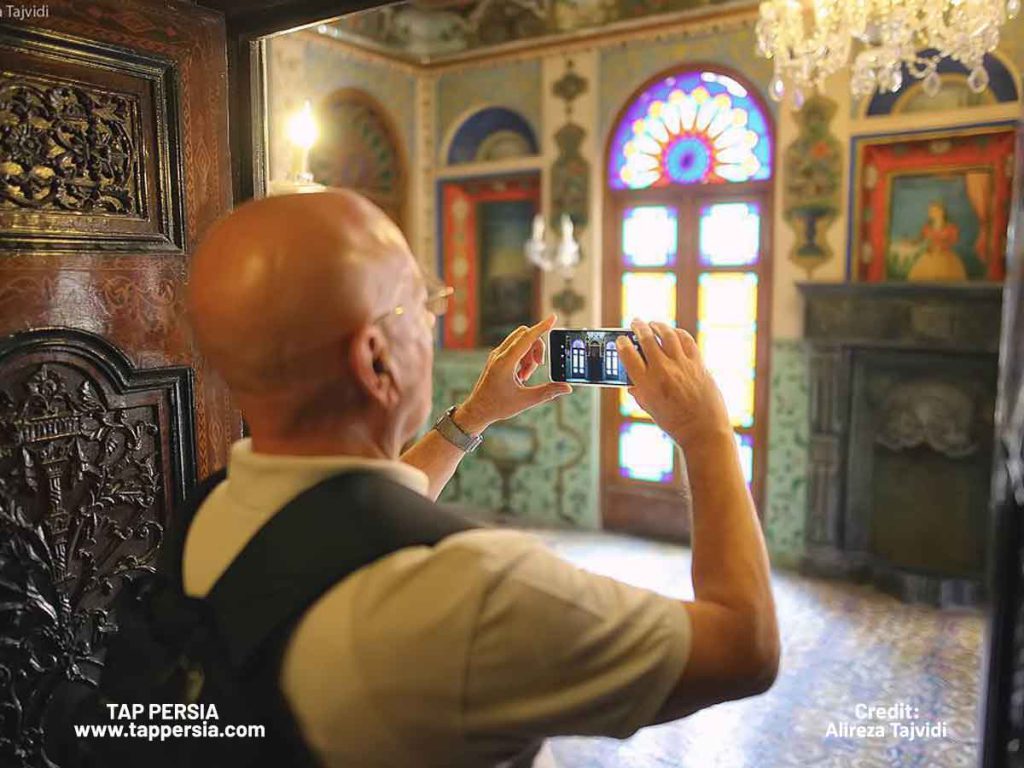
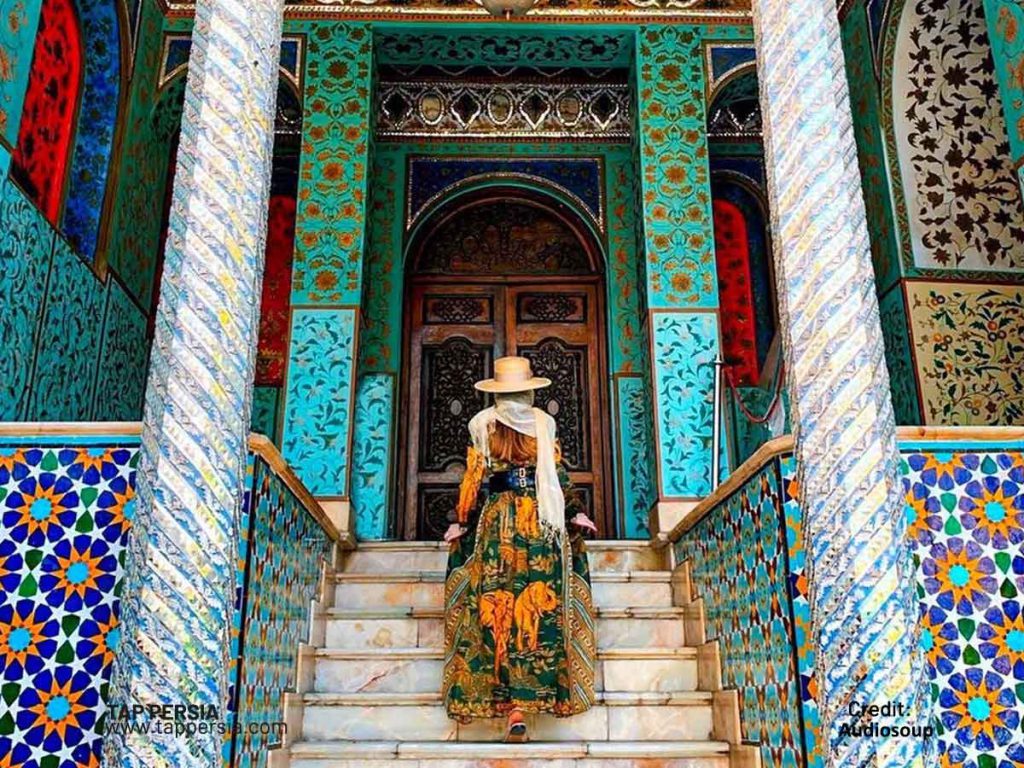

Two chambers, referred to as Goshvar, surround the structure (earrings). The best-stained glass window at Golestan Palace is in one of the room’s principal spaces. A golden cupola and four wind towers made of glazed blue, yellow, and black tiles stand outside. Wind towers are constructed to enable the acclimatizing breeze to flow throughout the structure.
5.Talar-e Berelian (Hall of Brilliance)
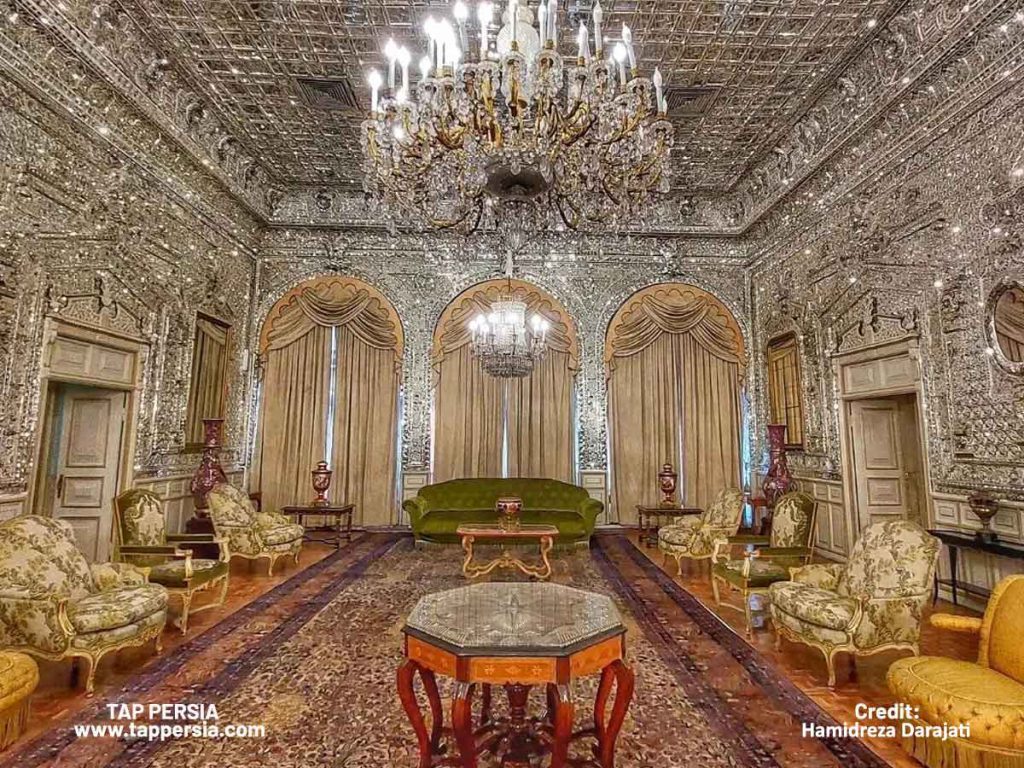
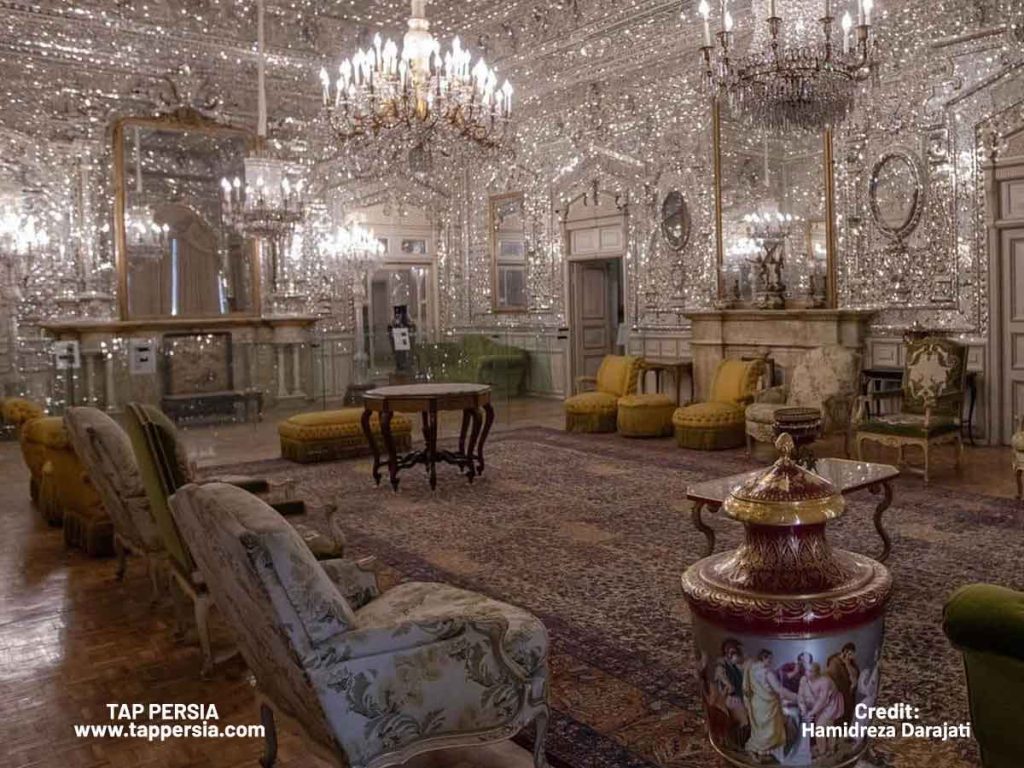
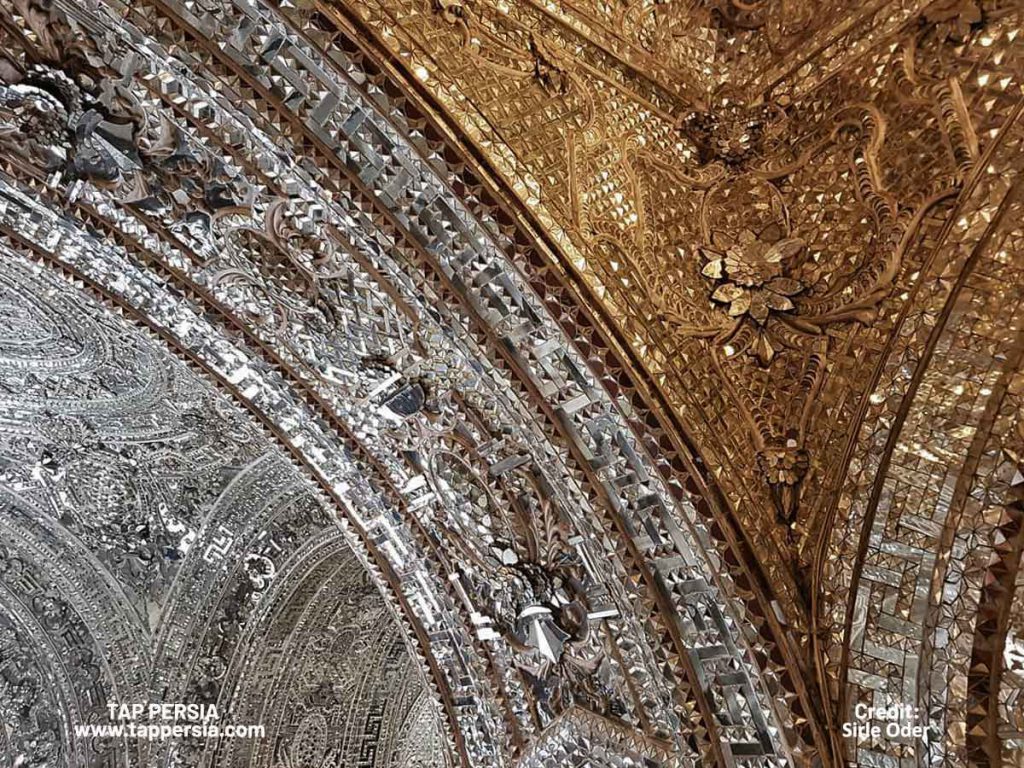
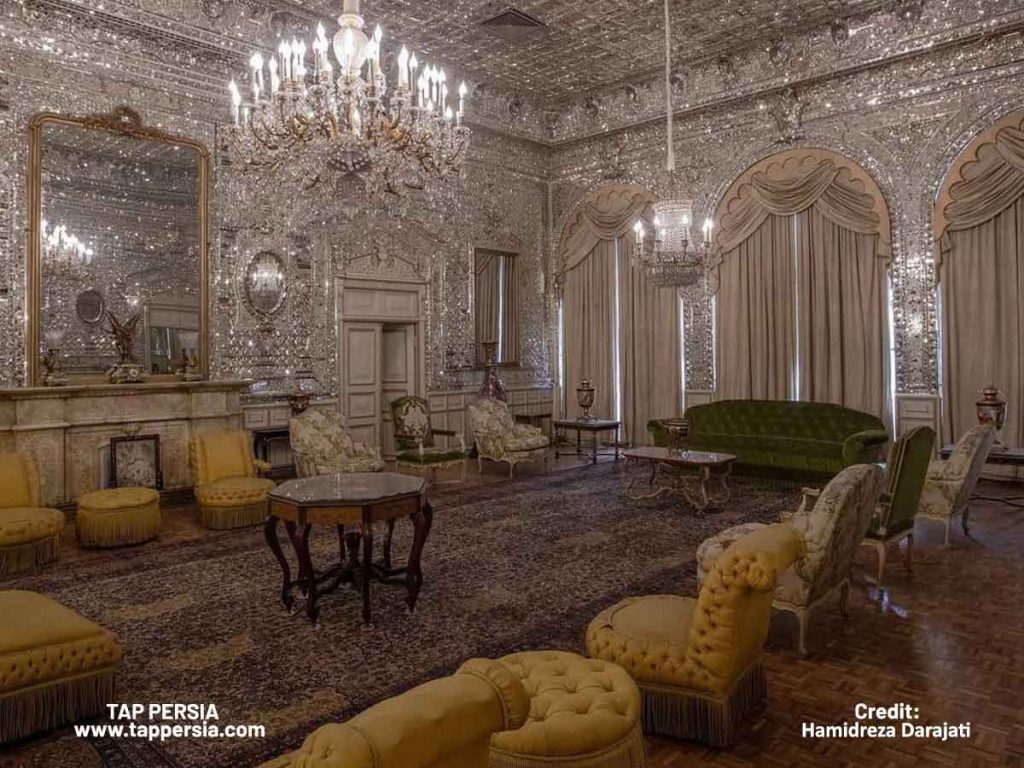
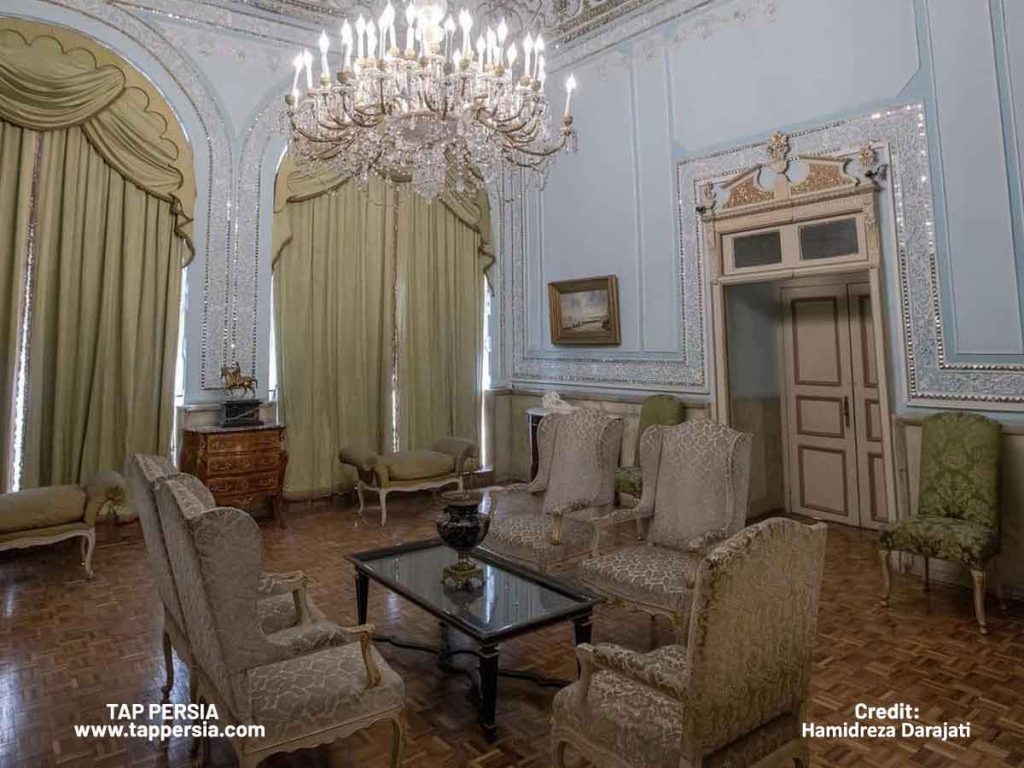
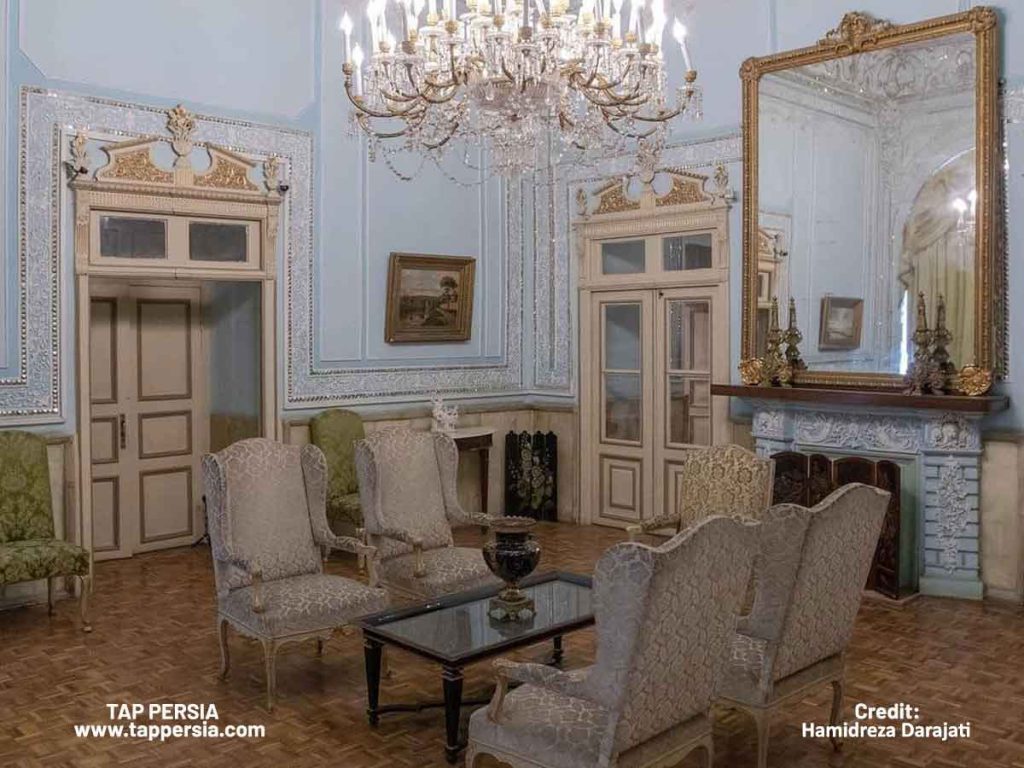
It was given that name because it is adorned by the exquisite mirror work of Iranian artists. The Hall was constructed by Nasser-ol-Din Shah to replace another hall known as Talar Bolour (Crystal Hall). The wetness had damaged the Bolour Hall, which Fath Ali Shah had constructed. The mirror work and chandeliers of the Berelian Hall are legendary. The Golestan Palace has an oil painting by Yahya Khan Sanie-ol-Molk Ghafari that shows the interior design of this hall before Mozafar-ol-Din Shah’s (r. 1896–1907) renovations.
6.Talar-e Zorouf
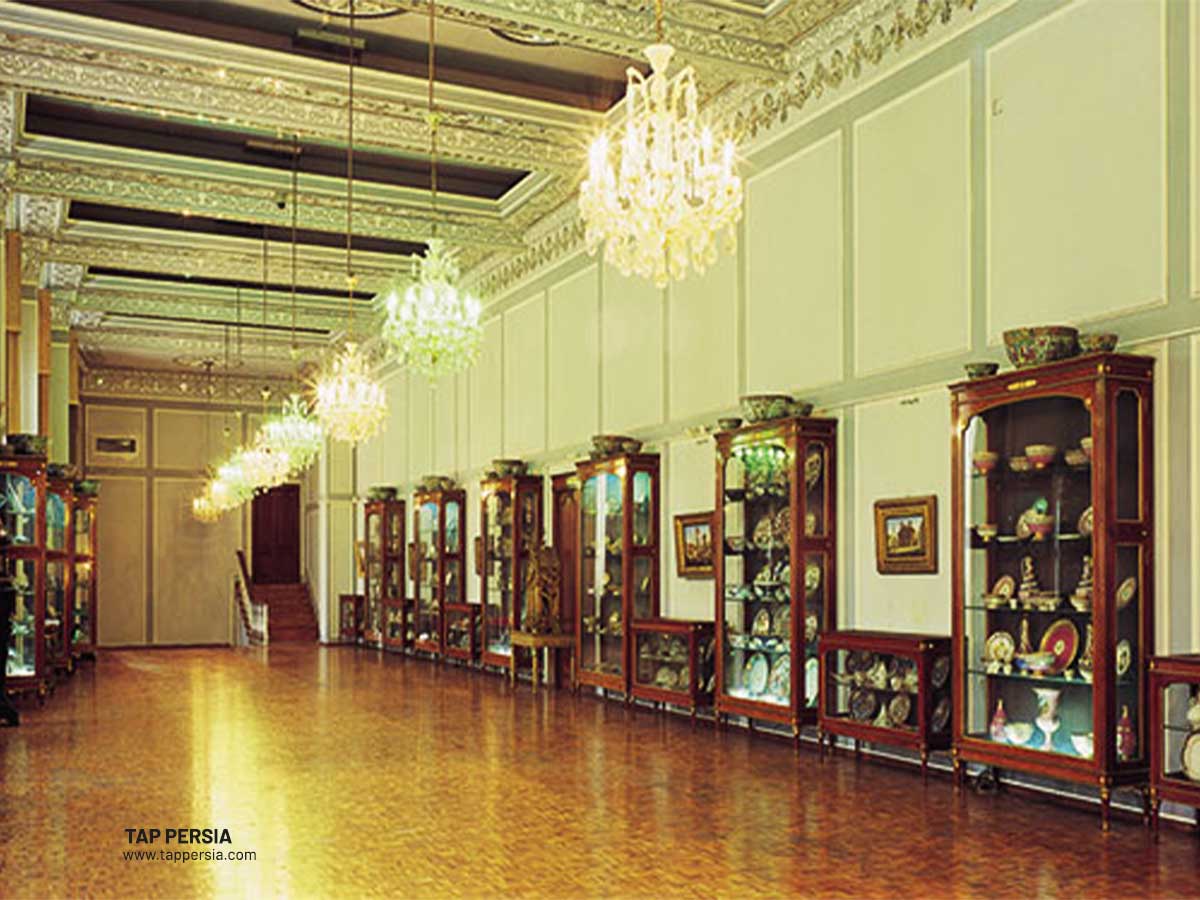
This edifice was put in place to take the position of the Narenjestan building, which was situated north of Sofre Khaneh or Adj Hall.
All of the porcelain that the European kings had given to the Qajar rulers was brought into this chamber and placed in exhibition cases that were made specifically for this use.
There is exquisite and collectible china around this area. The most outstanding among them are:
The china that depicts the Napoleonic wars that Napoleon the First dedicated.
The china that King Nicoli the First dedicated.
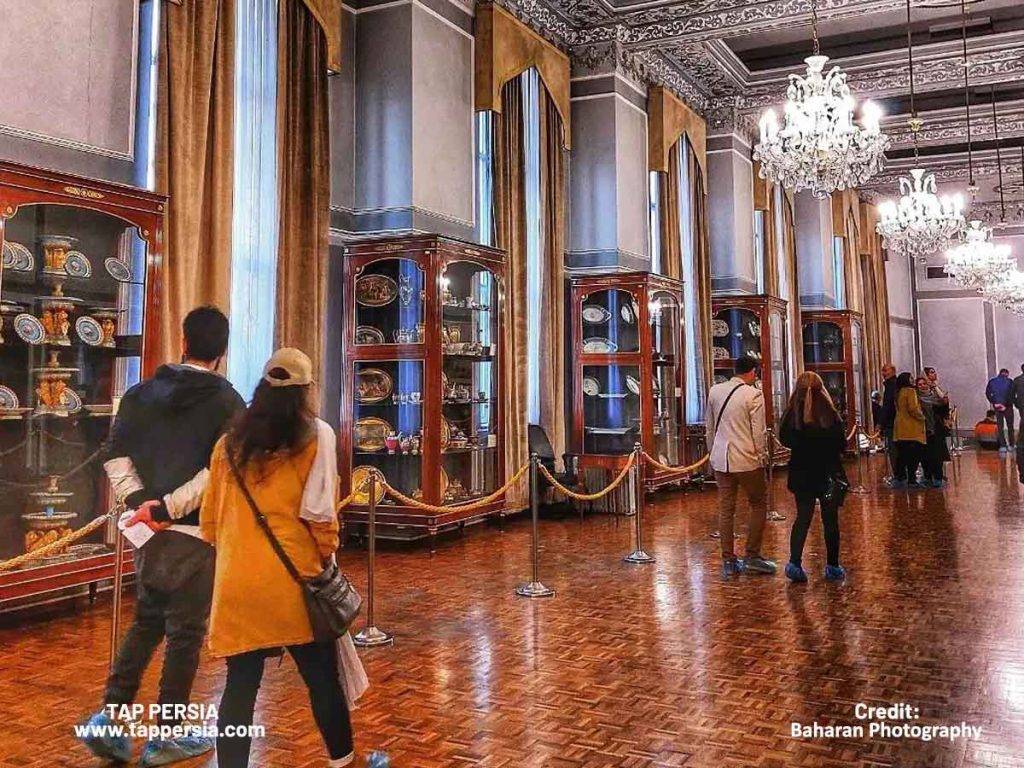
Chinaware was sent as a gift by Queen Victoria and embellished with stones and jewels.
The chinaware that the Iranian crown prince received as a gift from King Vilhelm.
A Melacit Stone set that was created and consecrated by Alexandre the Third.
7.Talar-e Adj (Hall of Ivory)
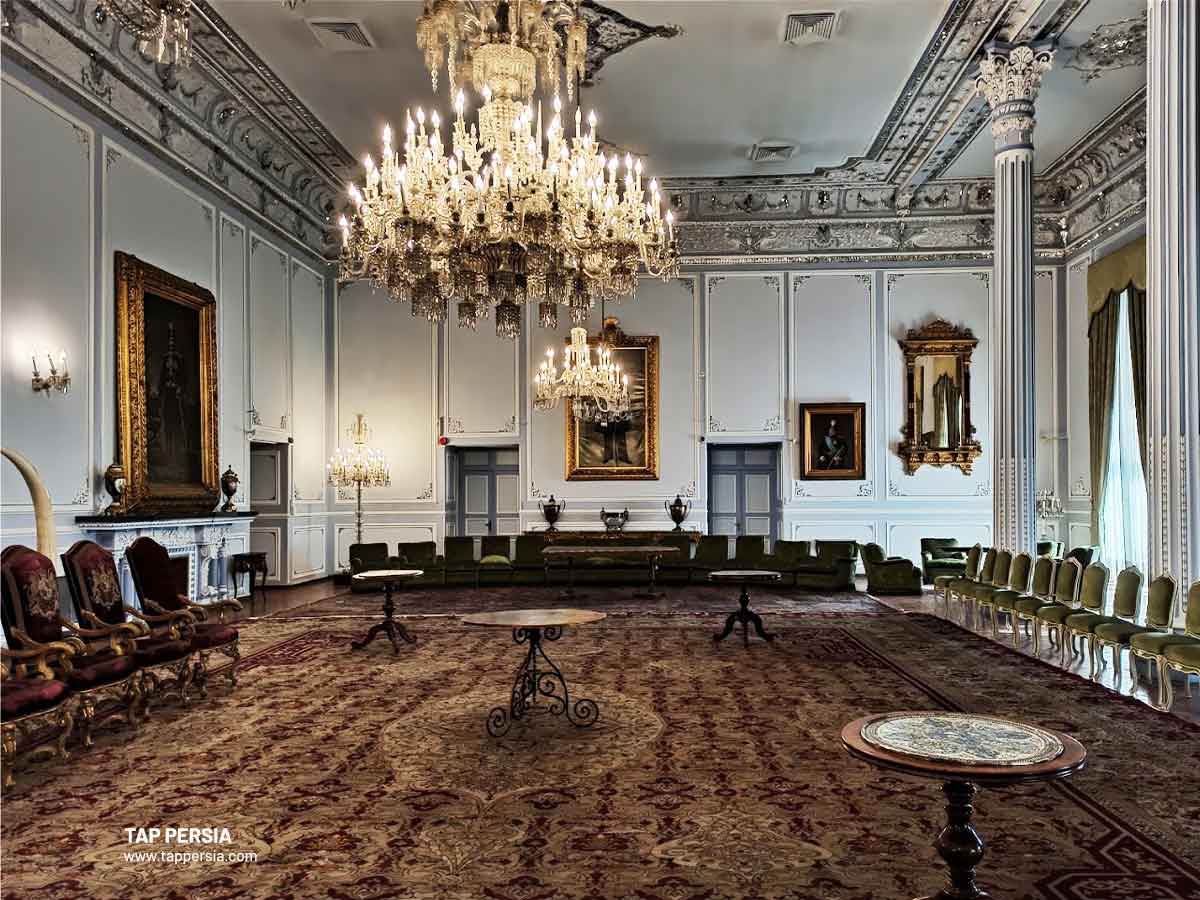
There is a big hall that serves as the dining area. Nasser-ol-Din Shah received presents from European kings, which were used to embellish the building. Mahmoud Khan Malek-ol-Shoara produced a painting that is kept in the Golestan Palace gallery and shows this hall’s exterior during the Qajar dynasty.
8.Talar Almas (Hall of Diamonds)
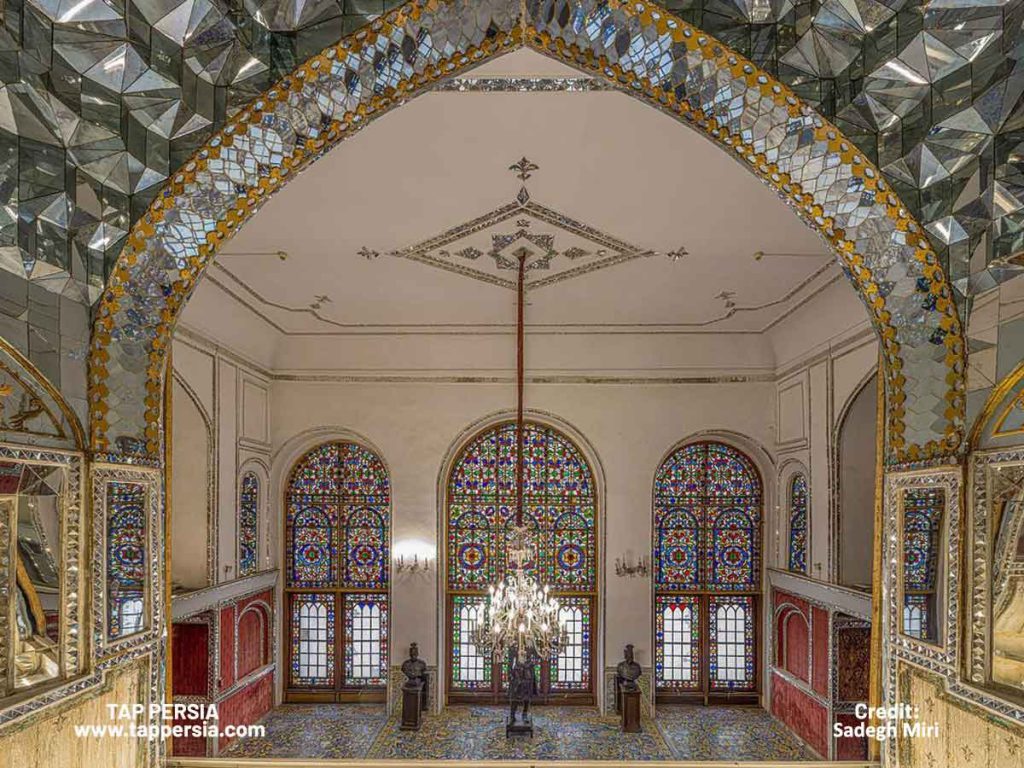
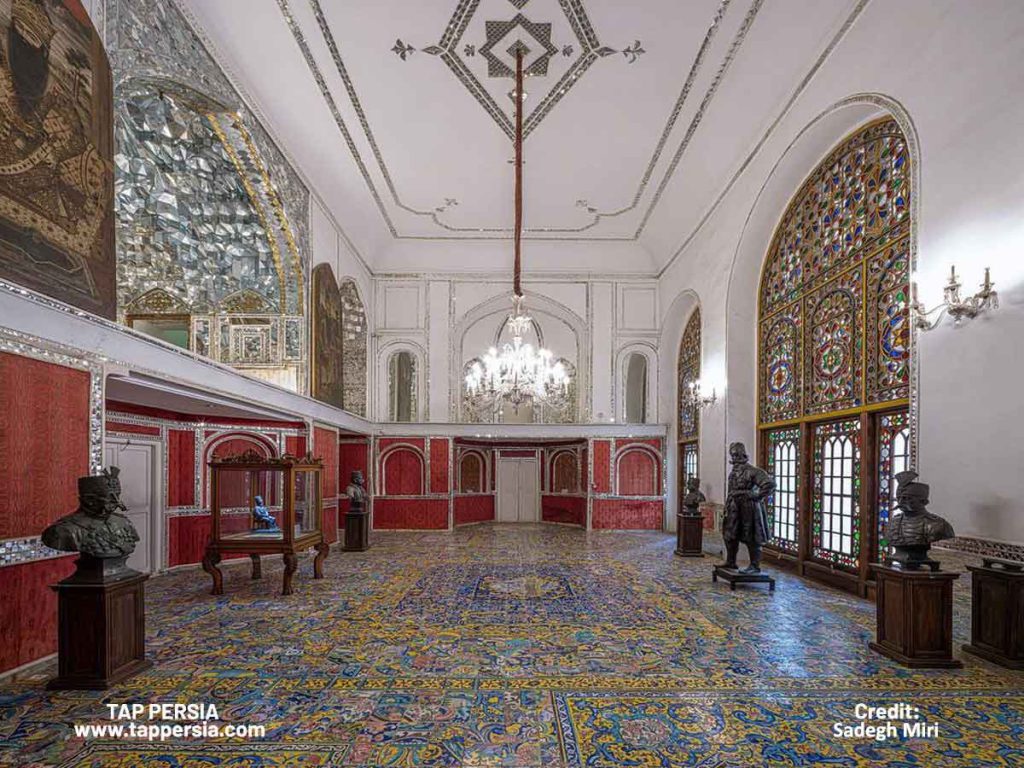
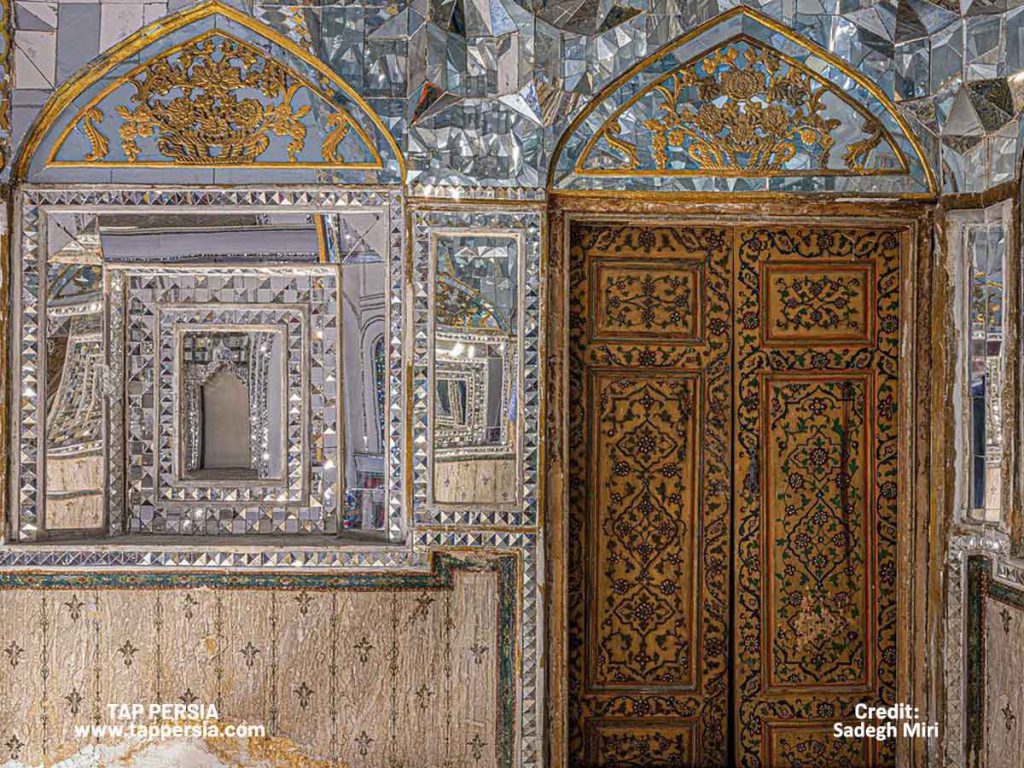
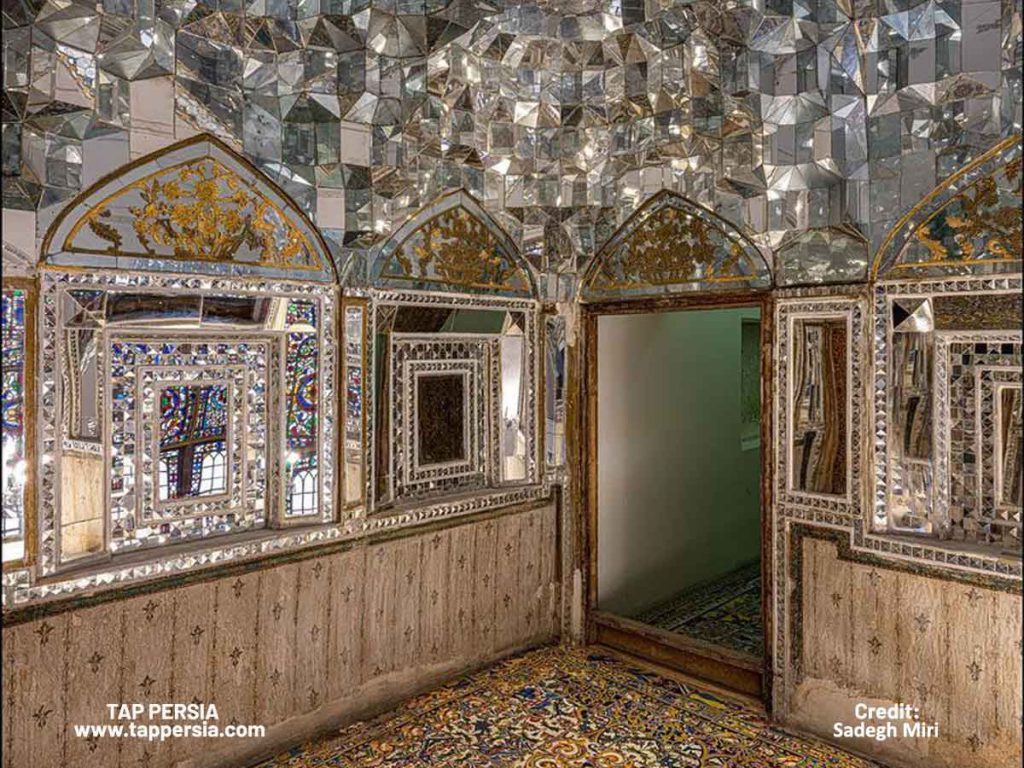
The southern wing of Golestan Palace is adjacent to the Badgir Building. Because of the exquisite mirror work throughout the structure, it is known as the Hall of Diamonds. Fath Ali Shah was in power when this hall was built (circa 1806). The Ogival arches of this hall were replaced with Roman ones when Nasser-ol-Din Shah restored it, altering its look. Also, he asked for imported European wallpaper to be used on the walls. It is only because Fath Ali Shah’s reign gave rise to the basic framework. It makes perfect sense for this room to house an exhibition of artwork and crafts from that time period.
9.Chador Khaneh
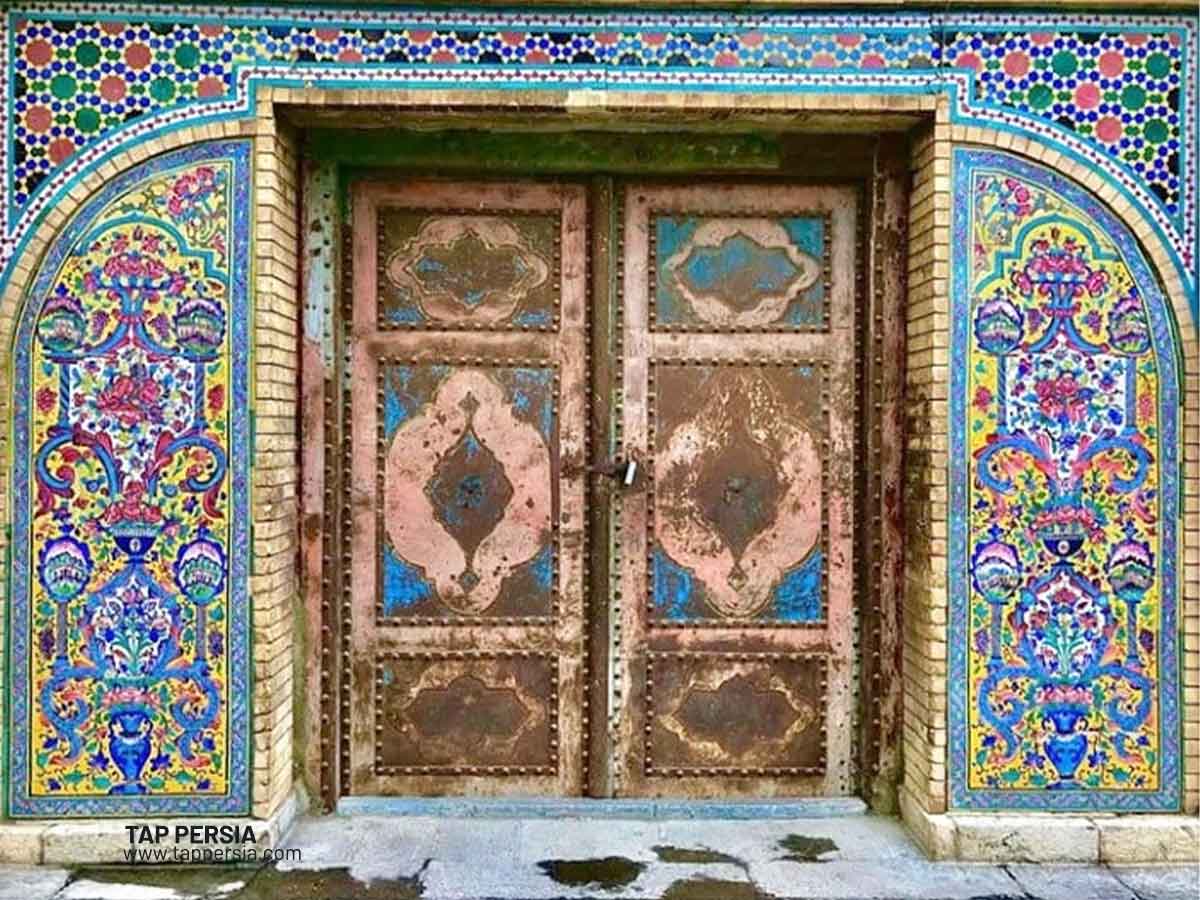
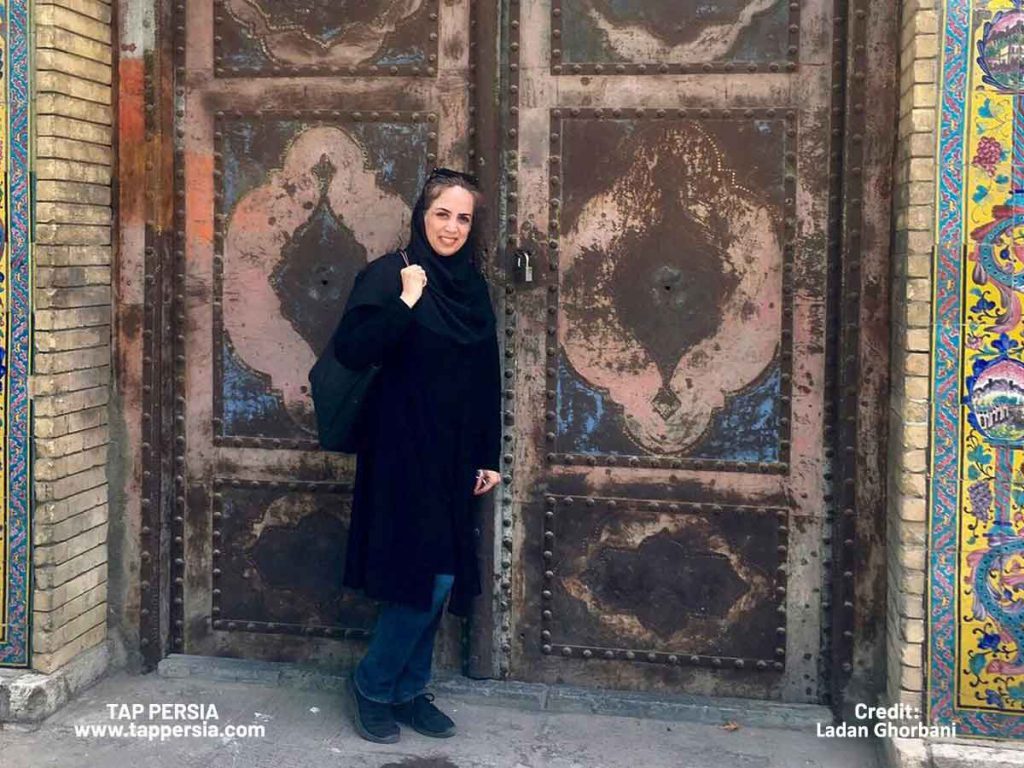
Royal tents were kept at the Chador Khaneh (House of Tents), which was located between the Almas Hall and Badgir. The Qajar tribe enjoyed the outdoors and went camping on many royal expeditions per year. These journeys were elaborate undertakings that included a large number of servants and attendants in addition to all the needs of the throne. To fit the entourage, several tents were required. Therefore, the requirement for a House of Tents. Following extensive restorations, the Chador Khaneh is currently utilized as a meeting and lecture space.
10.Aks Khaneh
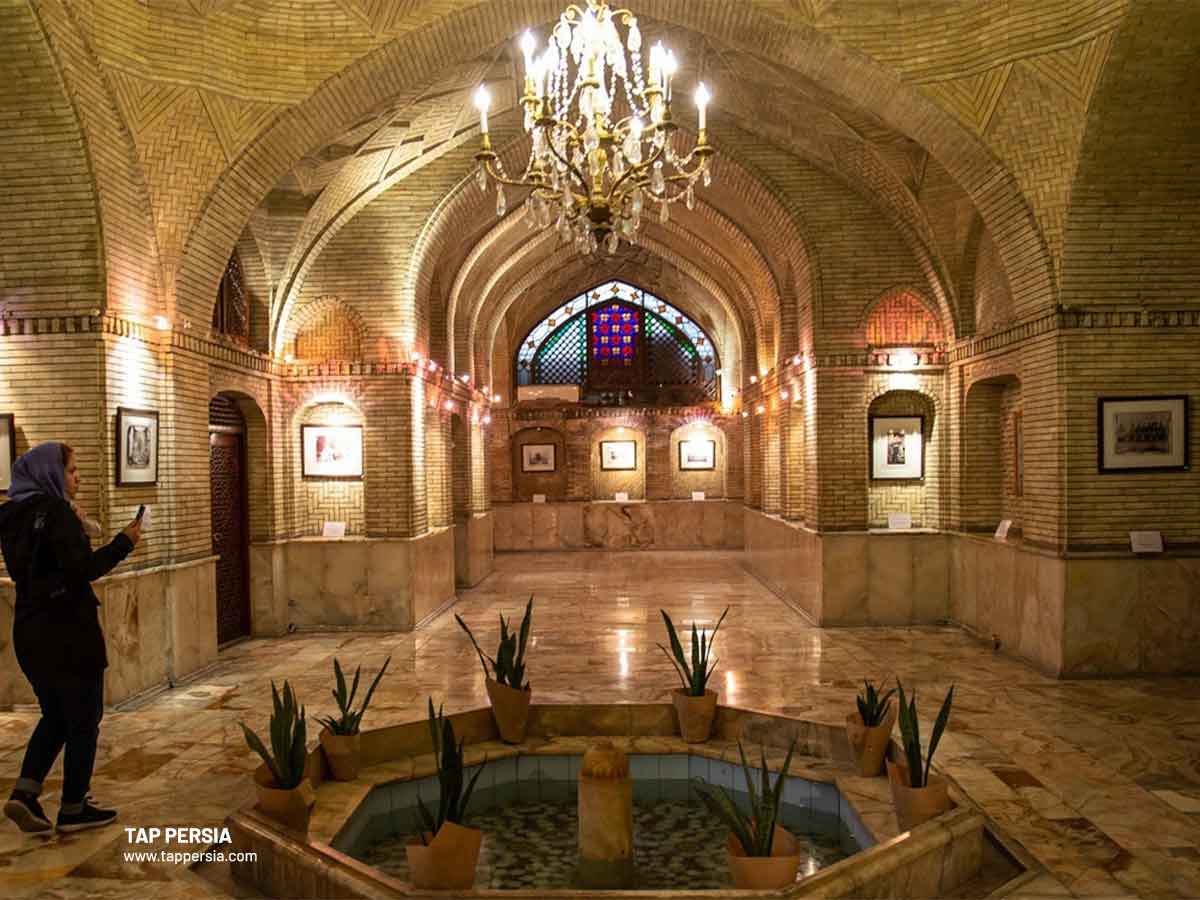
Under the Badgir, there is a sizable summer chamber called the Aks Khaneh (House of Pictures). Similar to the Hows Khaneh, a cooling mechanism was used to cool this chamber by channeling water from an underground stream (qanat) into a small pond. The harmful effects of humidity have led to the discontinuation of this technology. Major improvements were made to this area, which is presently being utilized as a gallery showcasing images from the Qajar era. Not long after the creation of the camera, Nasser-ol-Din Shah developed an interest in photography. He was an enthusiastic photographer, in fact. There are pictures that Nasser-ol-Din Shah took and pictures that he described at the Aks Khaneh.
11.Takht-e-Marmar
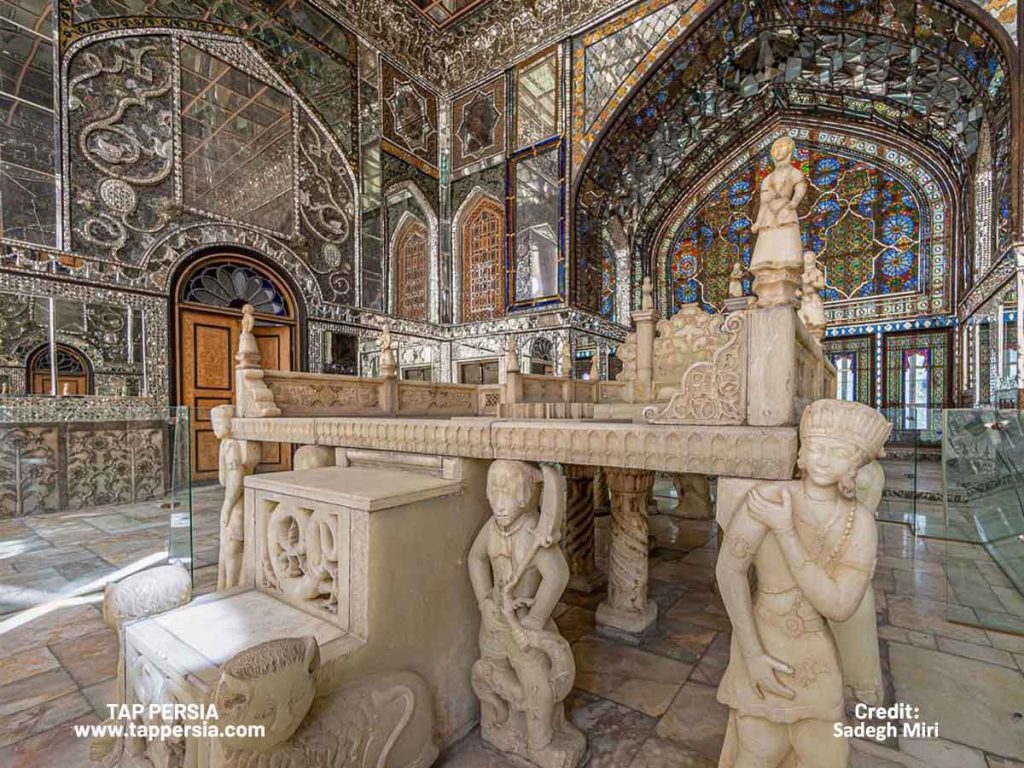
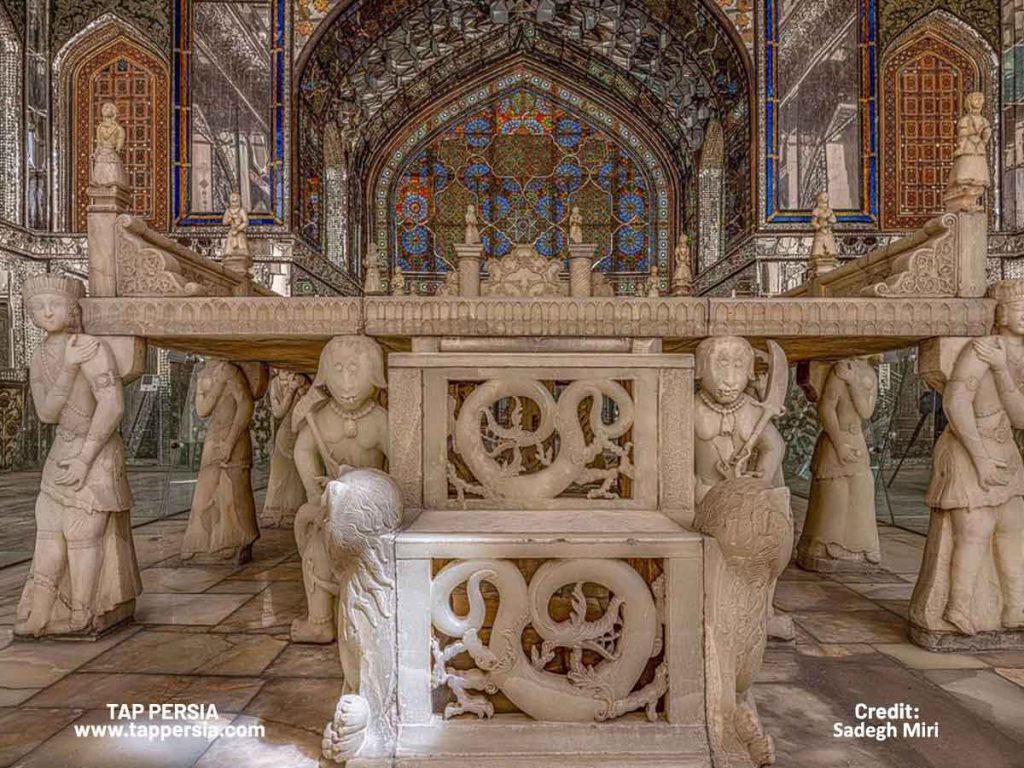
Fath Ali Shah Qajar commissioned the construction of Takht-e-Marmar (Marble Throne), a magnificent terrace, in 1806. The throne is a fine example of Iranian architecture and is decorated with stucco, enamel, tile work, marble carvings, mirrors, paintings, lattice windows, and woodcarvings. The Marble Throne is among the earliest buildings in ancient Arg. The current throne, which is built of the renowned yellow marble from the Yazd region and is located in the center of the terrace (iwan), is in place.
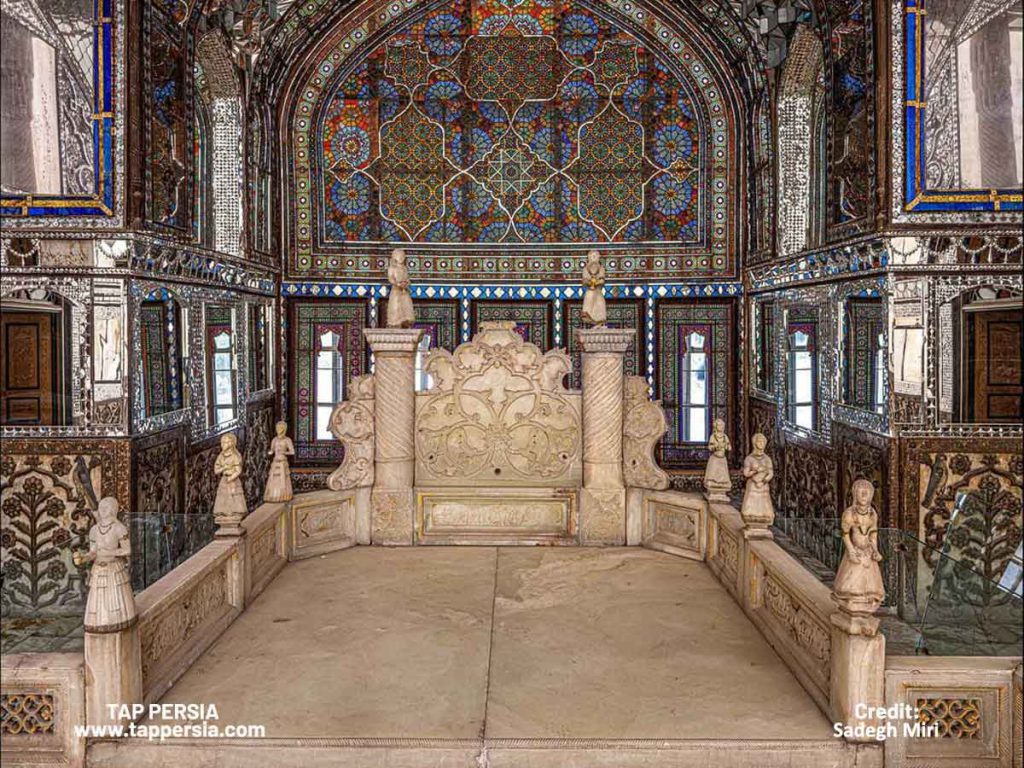
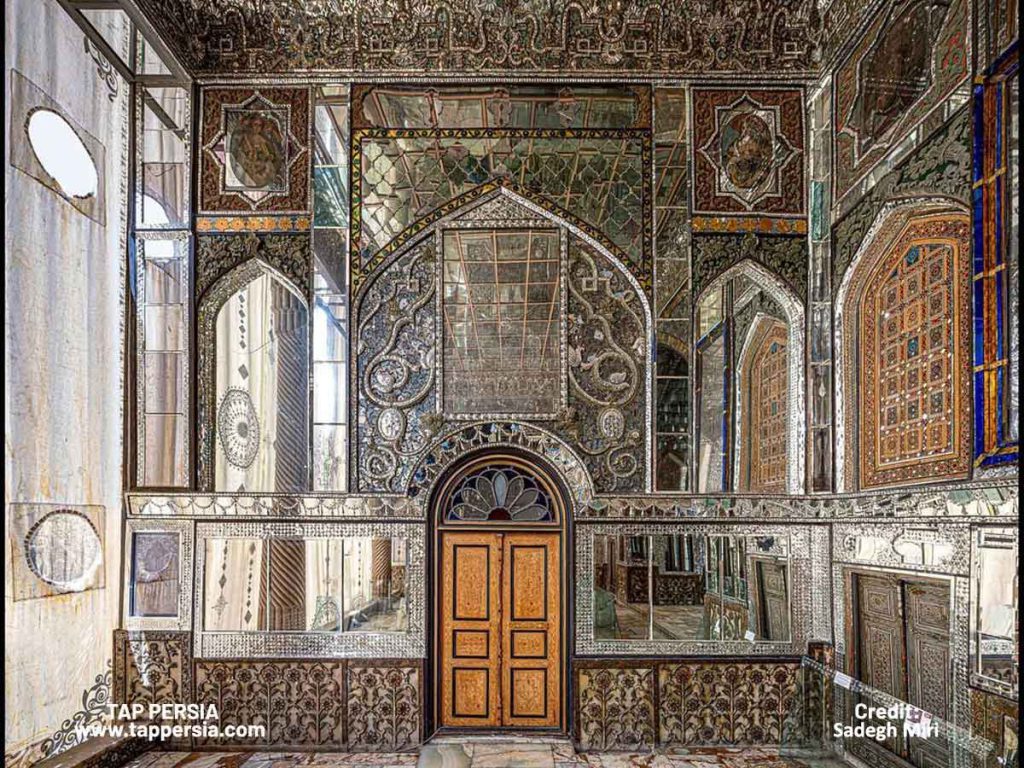
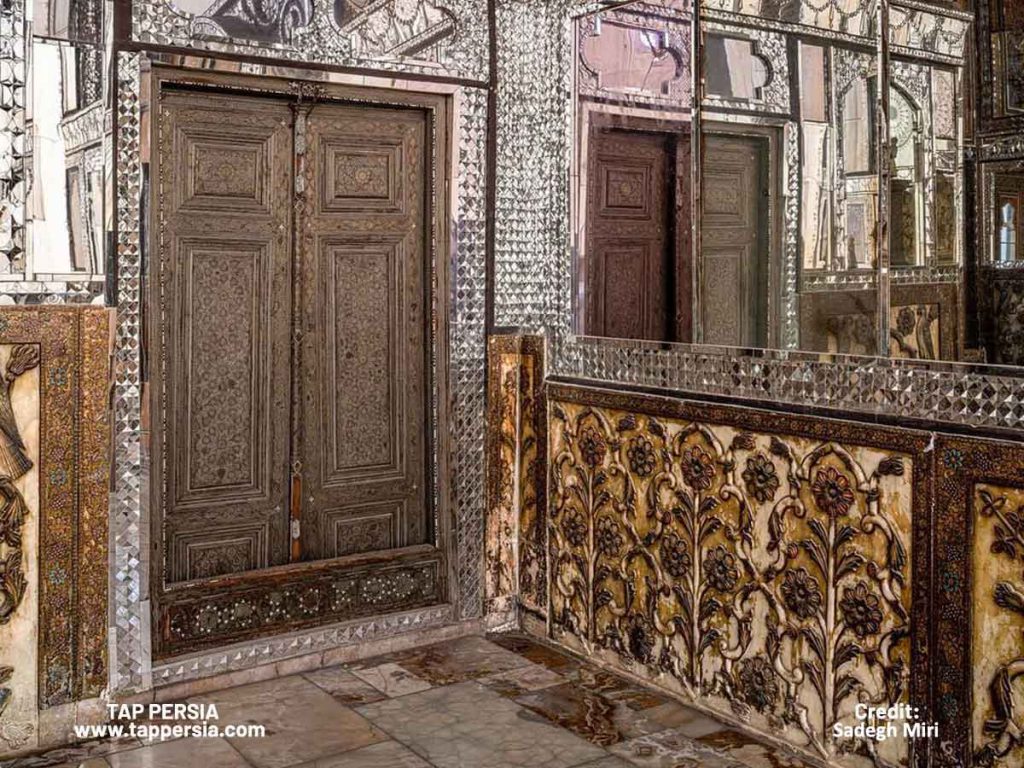
The top painter of the Qajar court, Mirza Baba Naghash Bashi, created the throne, which is constructed from 65 pieces of marble. The completion of this masterpiece was carried out under the direction of various renowned craftsmen of the period, including Mohammad Ebrahim, the Royal Mason. Under the reigns of Nasser ol-Din Shah and Fath Ali Shah, the architectural components and other ornamentation of the terrace was finished (r. 1848-1896).
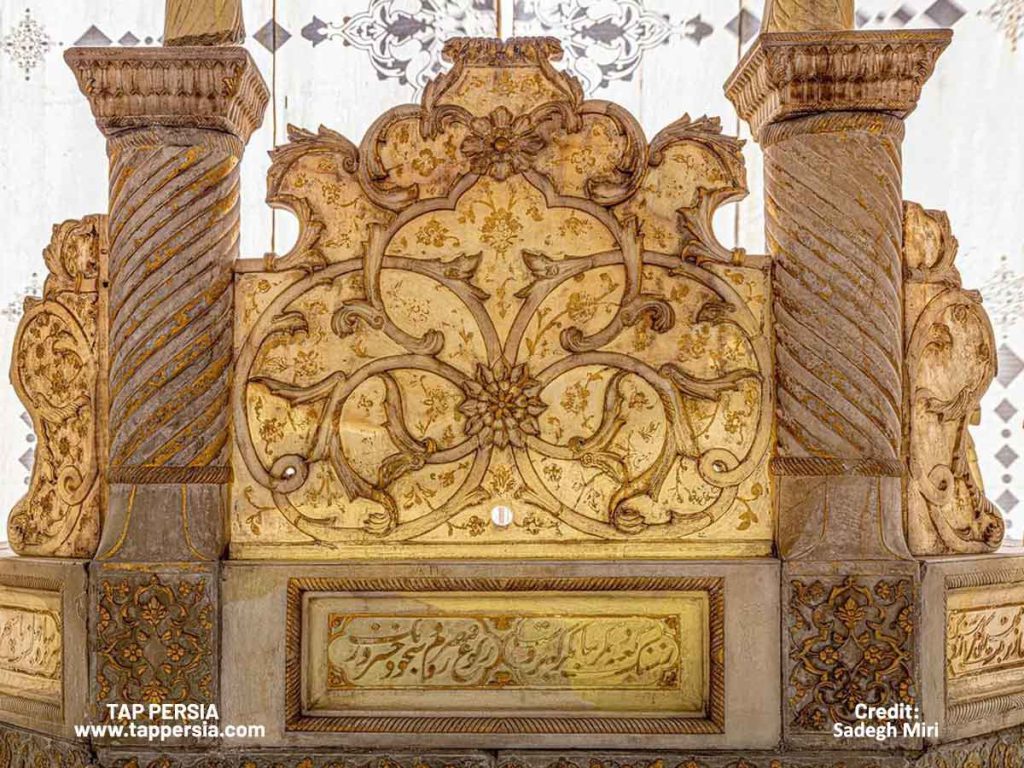
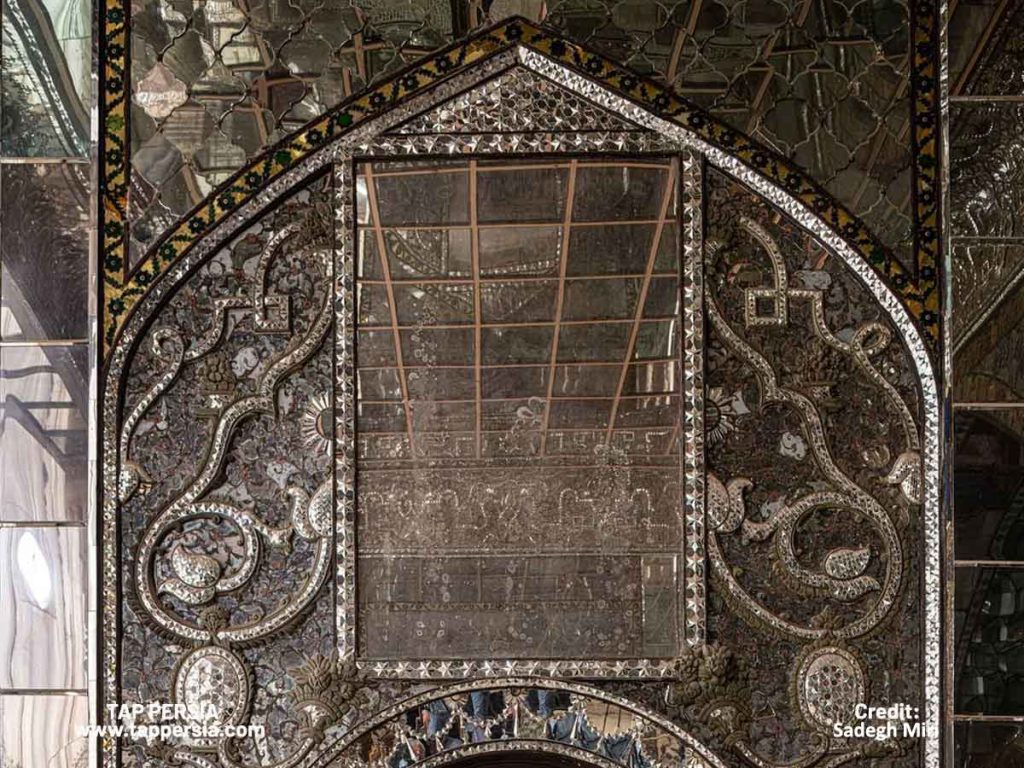
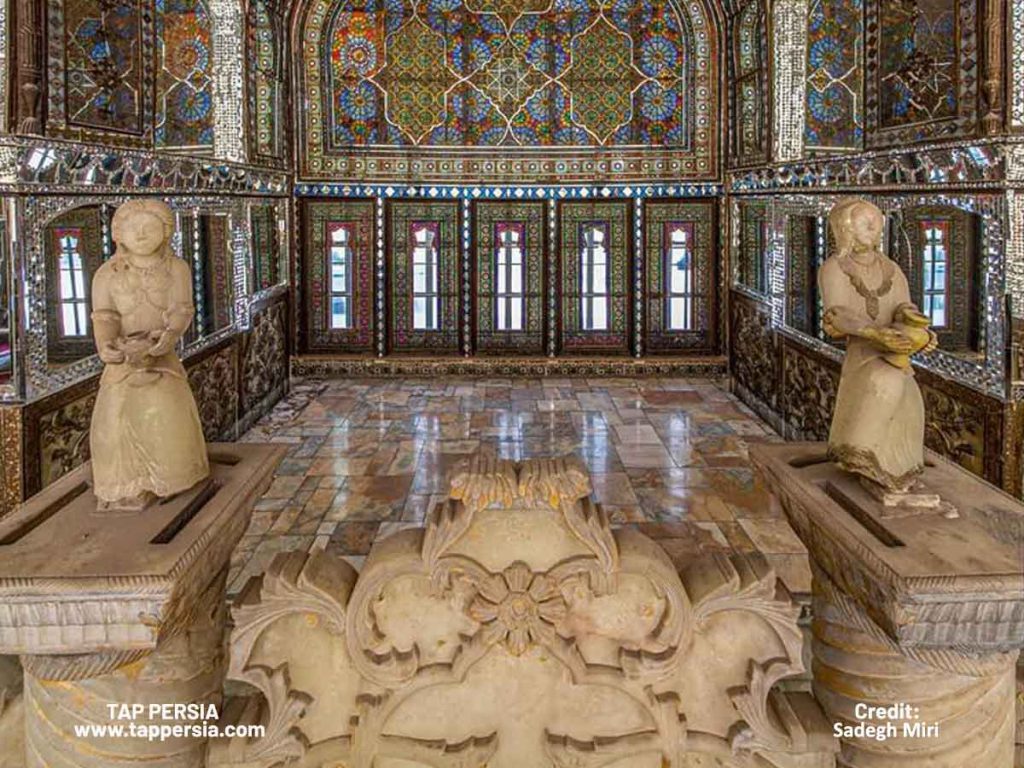
On this terrace, official court events and the coronations of Qajar monarchs have taken place (iwan). Reza Khan Pahlavi’s coronation as the self-declared King in 1925 was the last coronation to take place at Takht-e-Marmar.
12.Howz Khaneh Museum
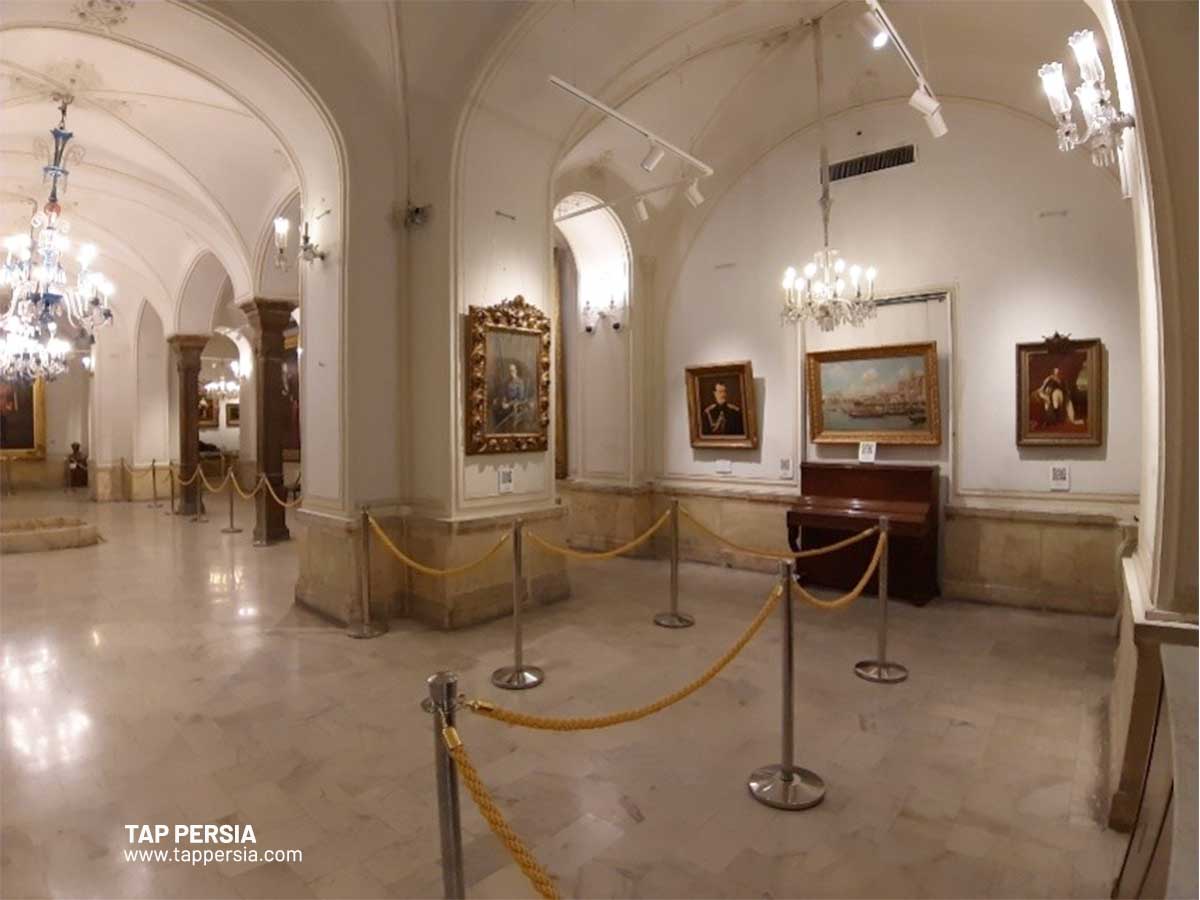
The Howz Khaneh is home to paintings by Foreign artists that were gifted to the Qajar royalty. During the Qajar era, the Howz Khaneh served as a summer residence. Water from an underground network of streams (qanats), in this instance the king’s qanat, was piped into tiny ponds inside the chambers by a sophisticated cooling system.
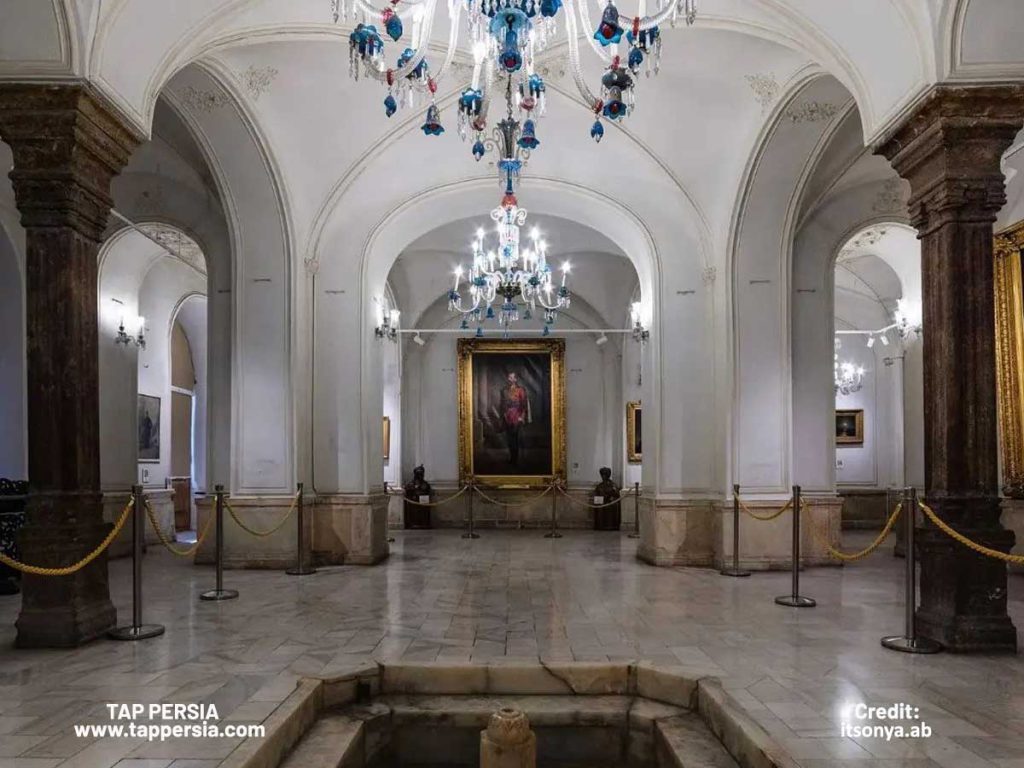
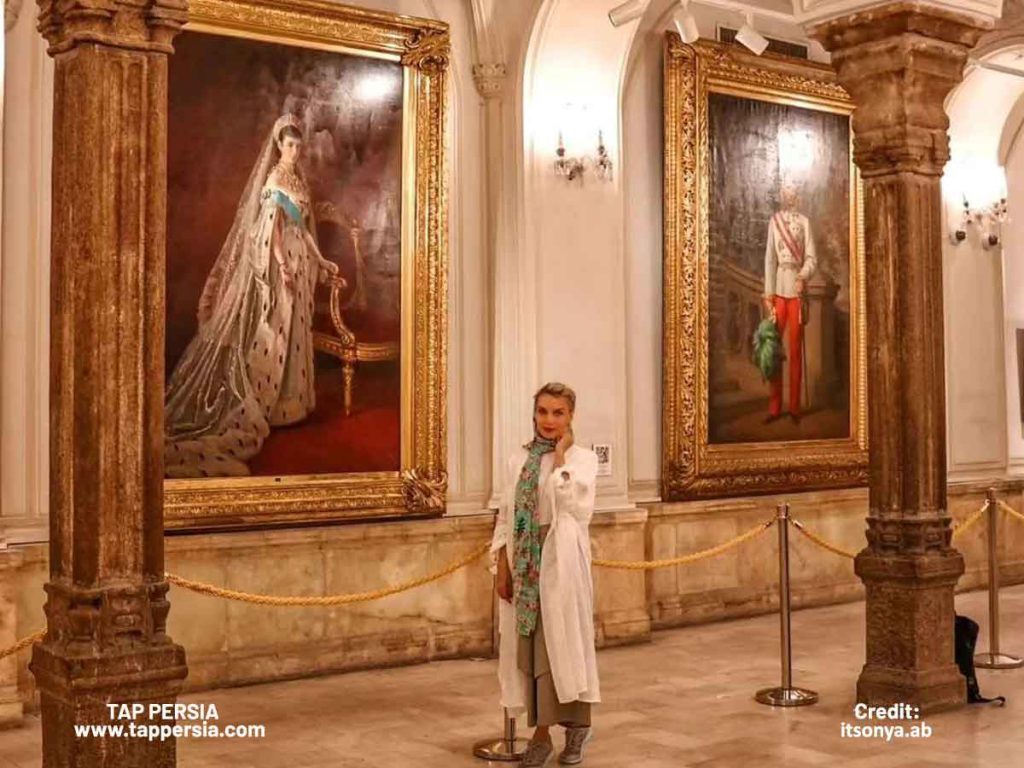
Hows Khaneh’s name derives from the word “pond,” which means pond. As many summer rooms as were required could be traversed by the system. The water was subsequently sent outdoors to water the royal gardens. The negative consequences of humidity have led to the abandonment of this practice.
13.Emarat-e- Khabgah
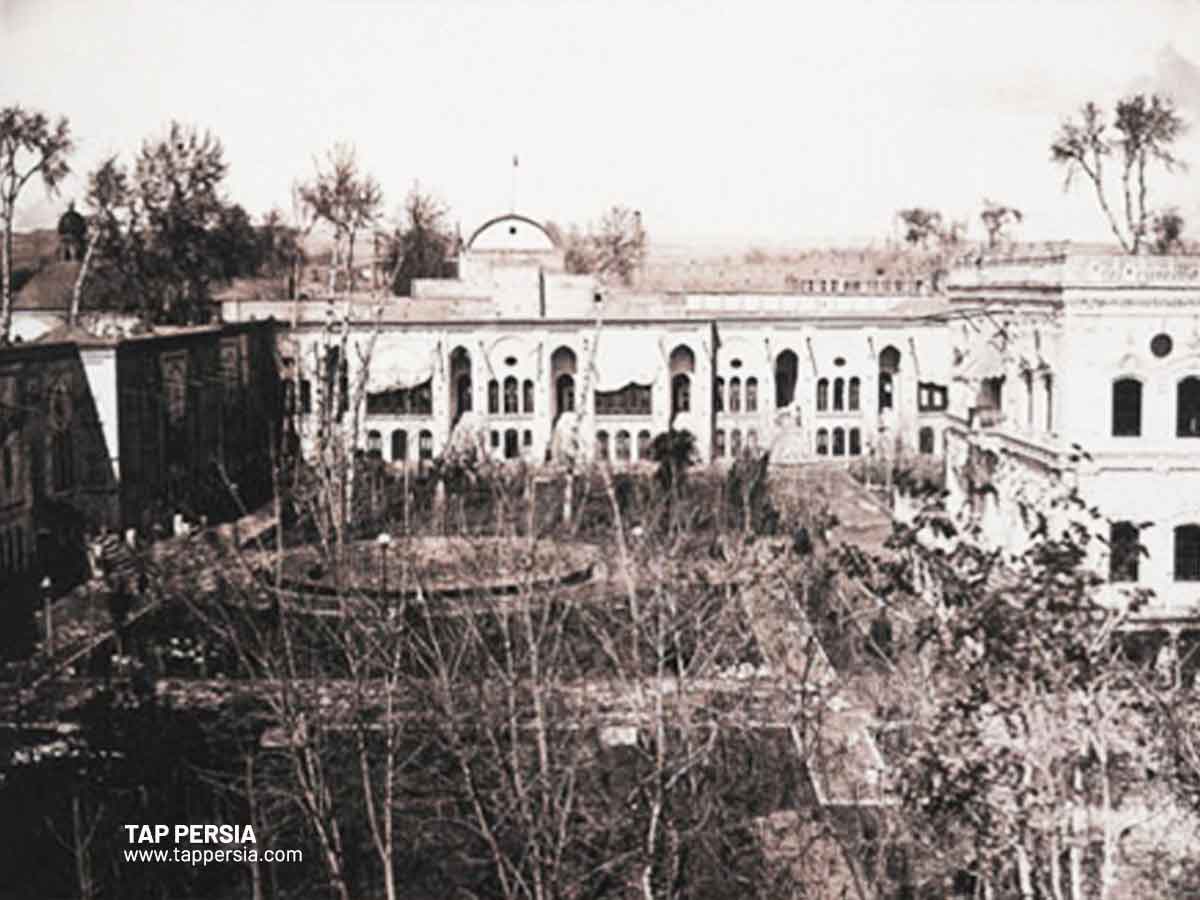
The Emarat-e- Khabgah, or the Siesta House and Golestan Palace’s most new update, was constructed for Queen Elizabeth II during her brief visit to Iran in 1955. The Royal Manuscripts Library and the Qajar picture archive are intended to be housed in the structure. The Royal Manuscript Library is now held in a temporary site as it awaits its ultimate transfer to its permanent residence in Khabgah. The library’s collection includes some of the most priceless illustrated works in Iran, including Shahnameh Baisongori and Moraga-e-Golshan.
14.Khalvat-e-Karim Khani
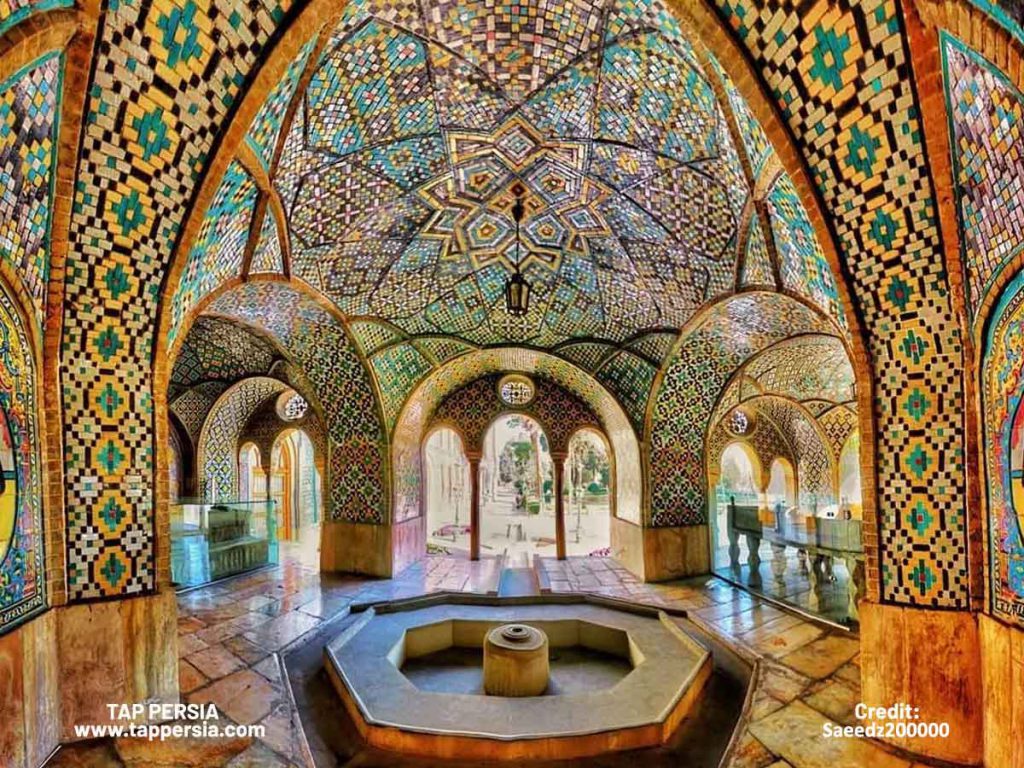
This structure, which was constructed in 1759, was a portion of Karim Khan Zand’s private home. The Khalvat-e-Karim Khani and Takht-e-Marmar share a similar fundamental structure. It is a terrace, similar to the latter (iwan). Inside the terrace, there is a little marble throne.
The building is considerably smaller and less ornamented than Takht-e-Marmar. This terrace once featured a little pond and fountain in the middle of it. Water from the fountain was supplied into the pond by the king’s qanat, an underwater stream, which was subsequently used to irrigate the palace grounds.
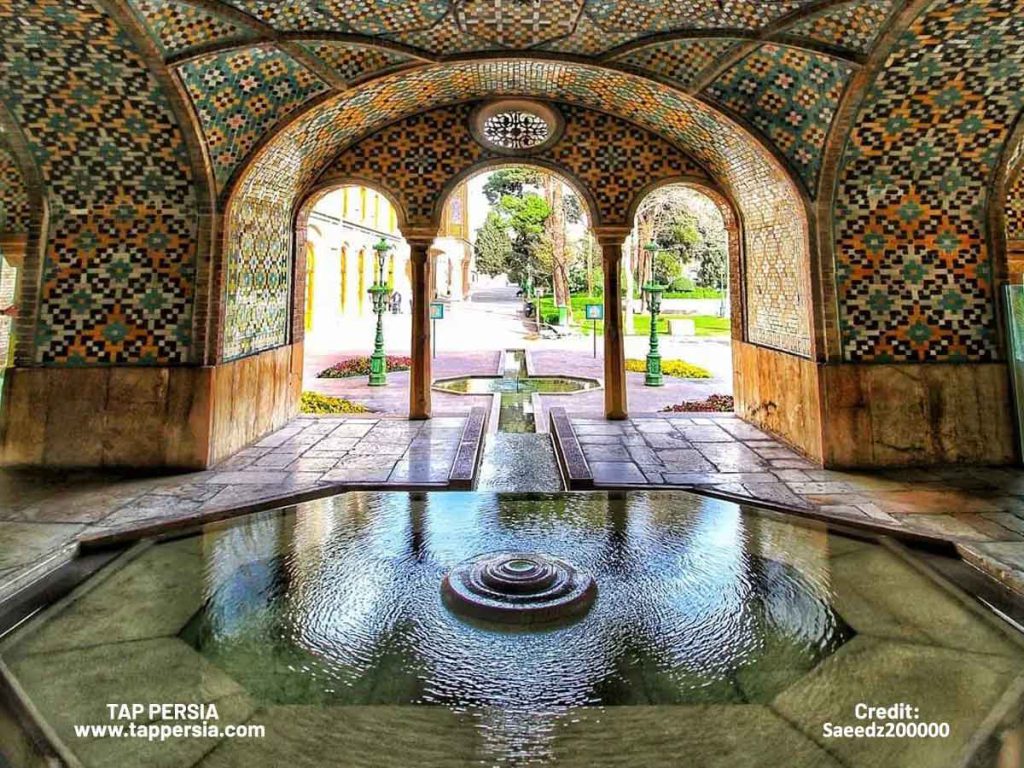
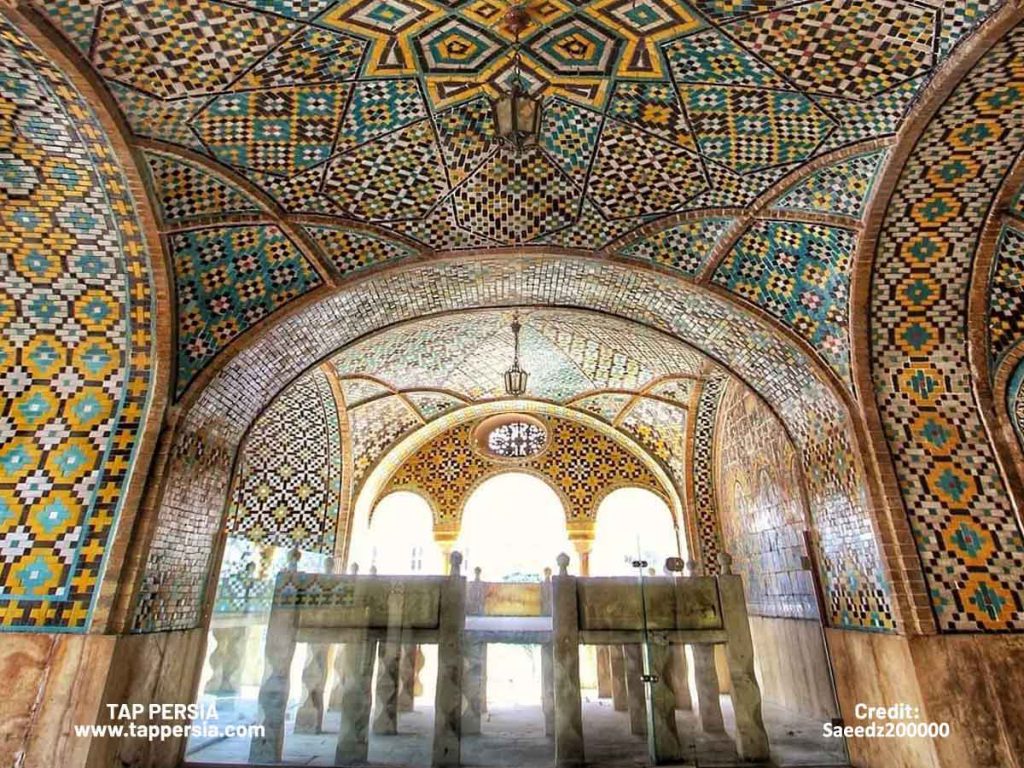
The area of Golestan Palace(Historical places in Iran) that Nasser-ol-Din Shah liked most. According to rumors, he spent a lot of time relaxing and reading here while quietly reflecting and puffing on his water pipe. Many people actually think he was the one who gave the building the name Khalvat (a cozy corner). It’s remarkable that the priceless tombstone of Nasser-ol-Din Shah, which had been lost for some time, has now been located in this serene area of the Palace. There is no denying the beauty of this marble stone with a carved likeness of Nasser-ol-Din Shah.
15.Special Museum
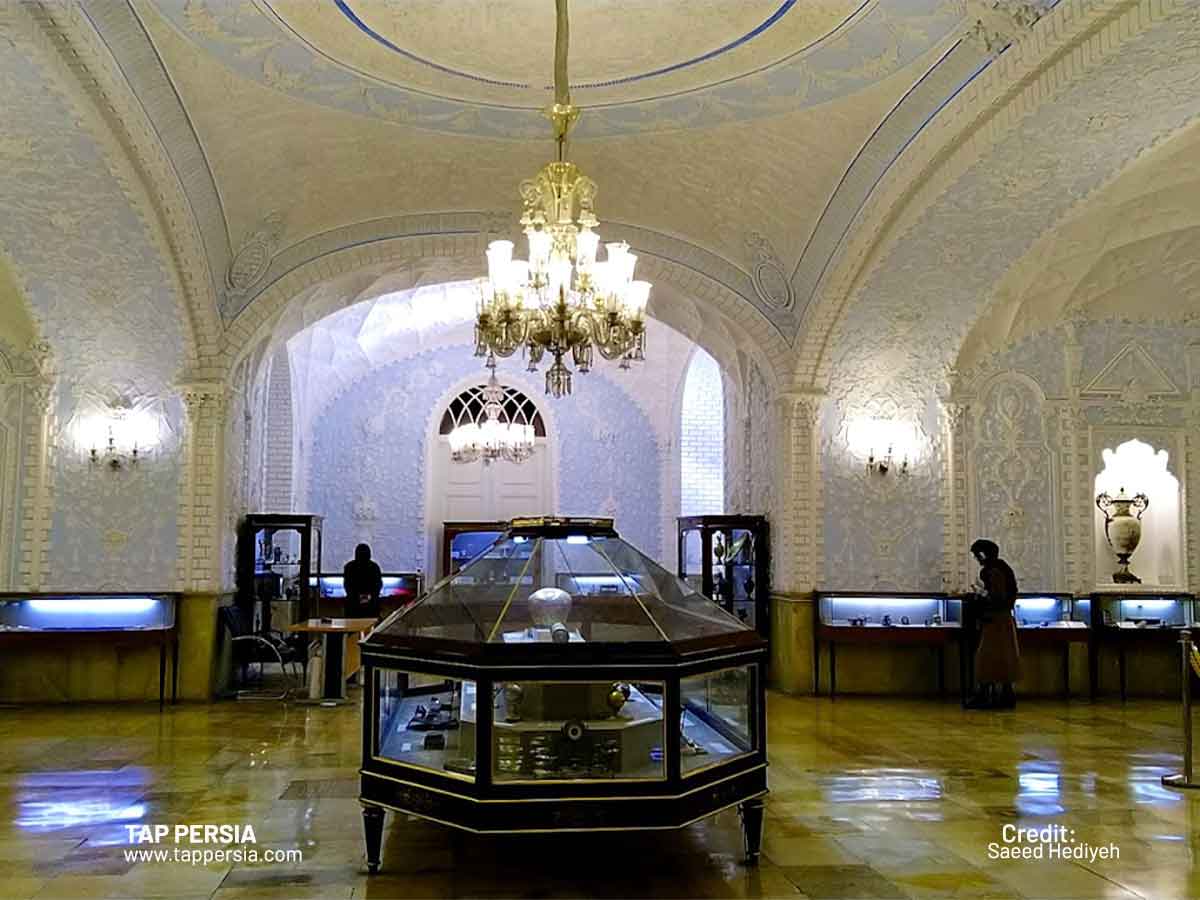
Subterranean to Salam Hall or Museum is where this structure is situated. It does definitely belong to the original Iranian museum, which Mohamad Ebrahim Khan Memar Bashi constructed. This structure served as a storage facility for the silverware and china devoted to Qajar rulers during the reign of Nasser-0l-Din shah. To display the priceless presents that were handed to the Qajar rulers during the Pahlavi era, this storehouse was converted into a museum.
The following are some of the unique items now housed in this museum in addition to the gifts:
- King Esmail Safavid’s helmet
- King Nader’s Bow and arrows
- Armband of Fath Ali Shah
- The collection of Qajar Seals
- Aga Mohamad khan’s crown
- A decorated ostrich egg
- Negar Khaneh
Tehran’s several museums currently house the original collection from the museum hall. The paintings of the royal court, however, are presently stored at the Golestan Palace, with European paintings being held in the Hows Khaneh and Iranian paintings being placed in the Neggar Khaneh. Persian artists’ works are shown in two parts, each intended to demonstrate how painting changed in Iran throughout the Qajar dynasty.
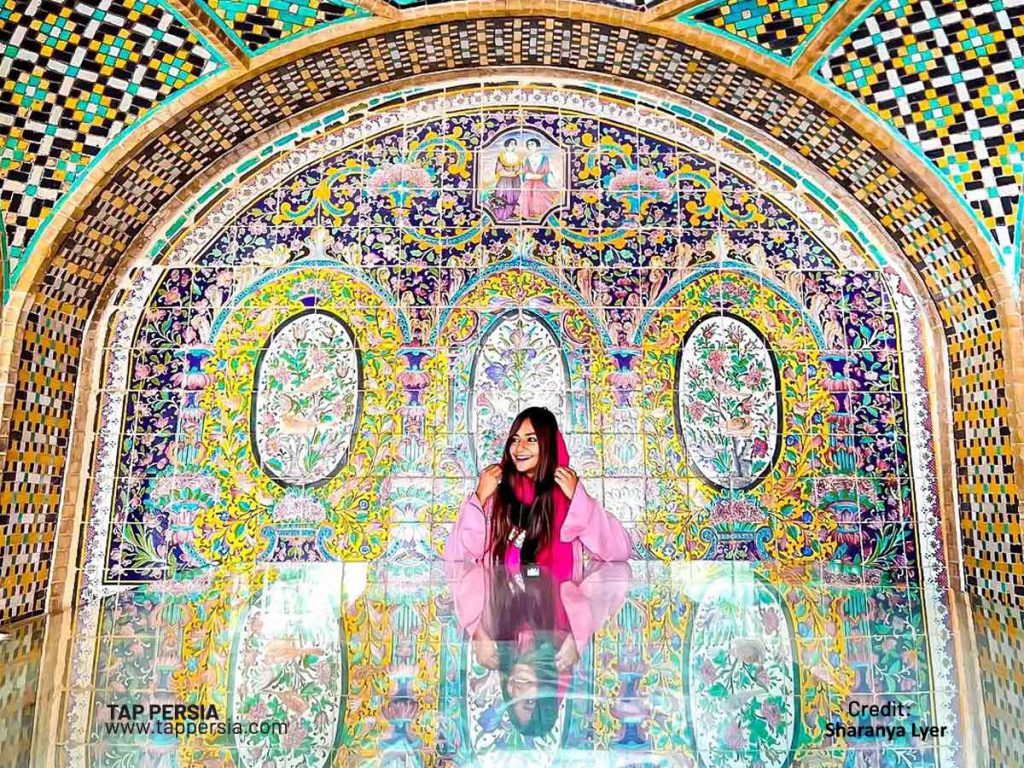
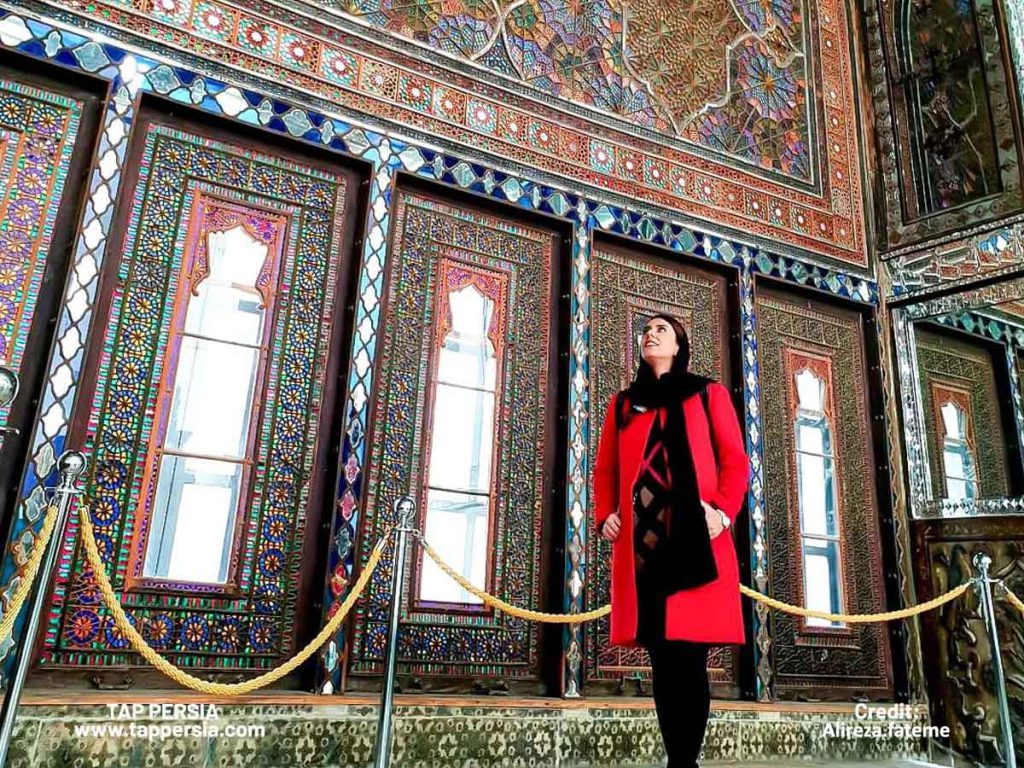
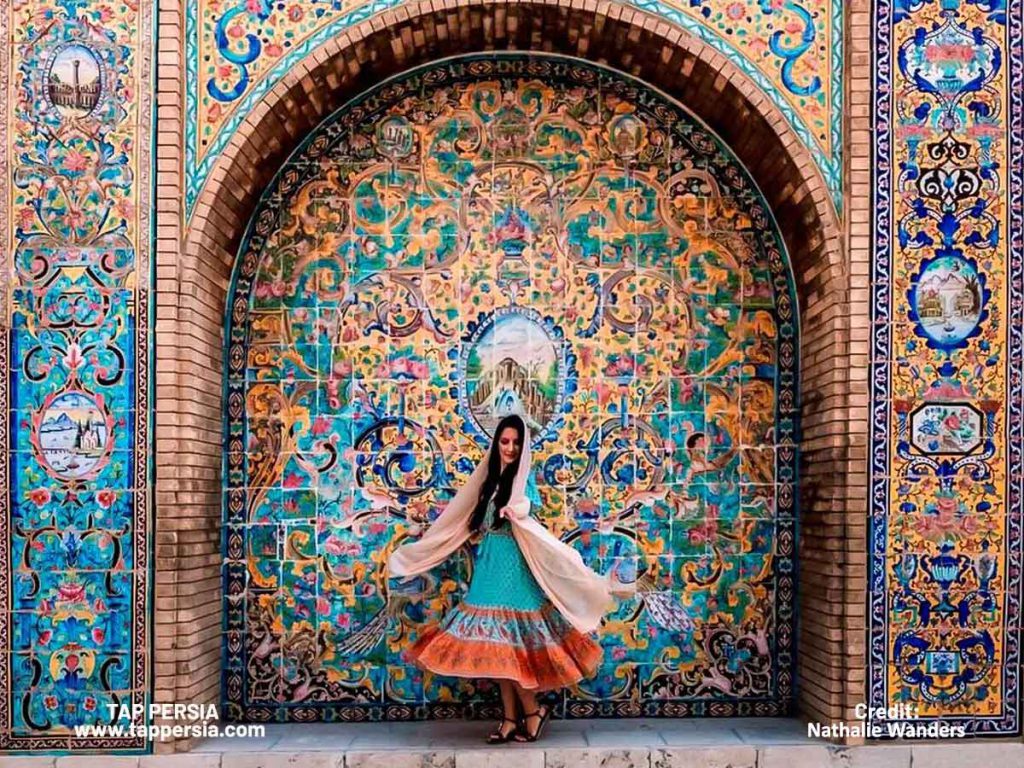
The early Qajar masters’ works, including those of Kamal-ol-uncle Molk’s Aboul Hassan Sani (Sanie-ol-Molk) and Mirza Baba, Mehr Ali Afshar, Ali Akbar Khan Mozaien-ol-Douleh, and Mehr Ali Afshar, are kept in the southern section of the Neggar Khaneh. The Royal Guard’s headquarters were located in northern Neggar Khaneh under the reign of Mohammad Reza Pahlavi. The northern hall presently houses the works of later masters of the Qajar era, such as Mohammad Gafari Kashani (Kamal-ol-Molk), Mosa Momayez, Mehri and Mahmoud Khan Saba (Malek-ol-Shoara), owing to substantial renovations which was completed in the year 1995.
16.Talar Salam (Reception Hall)
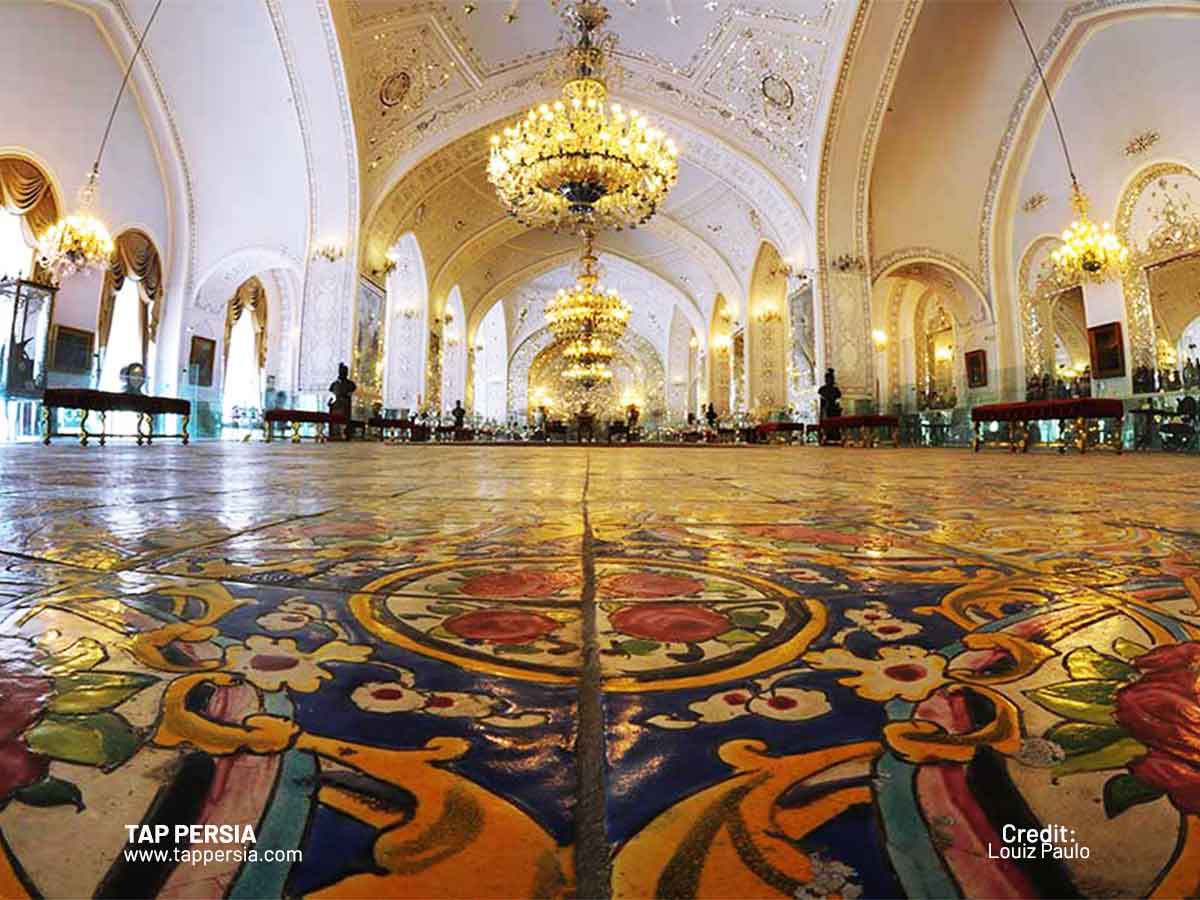
A museum was the initial plan for it. Talar Salam is the name given to the room that was assigned to host important receptions in the presence of the monarch after the Takht-e-Tavoos (Iran’s renowned Jeweled Peacock Throne) was relocated to the Royal Jewels collection at the Central Bank. During the time of Nasser-ol-Din Shah, visitors and envoys from European courts who were welcomed in the Arg talked highly of this magnificent hall and compared it to similar structures in Europe.
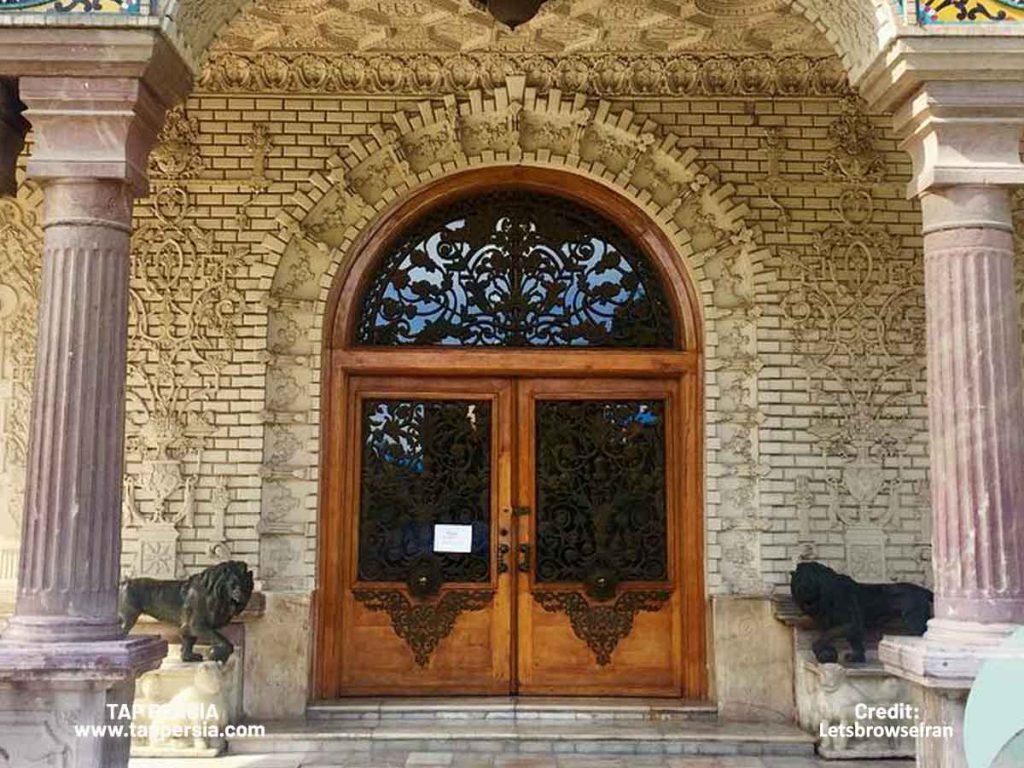
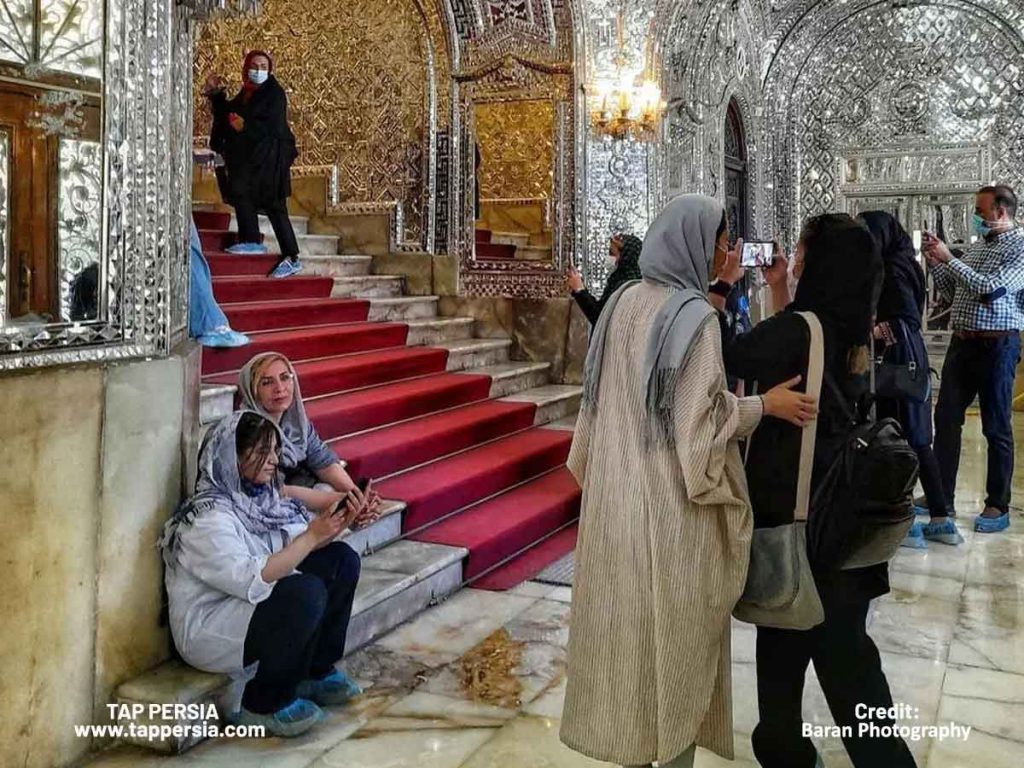
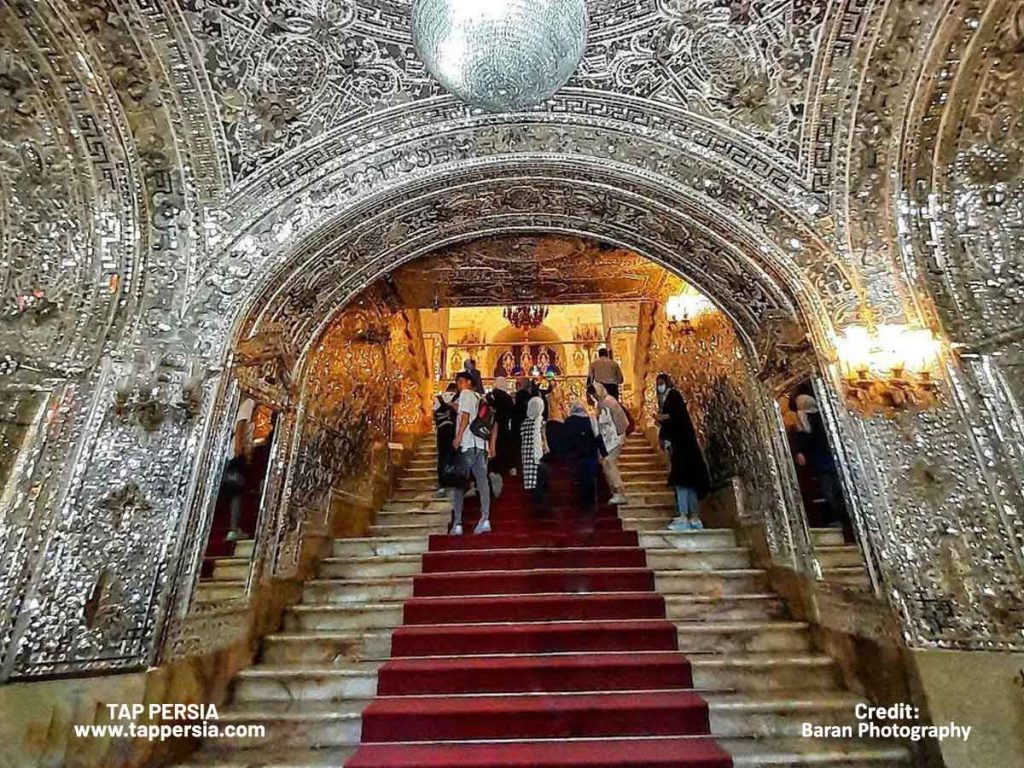
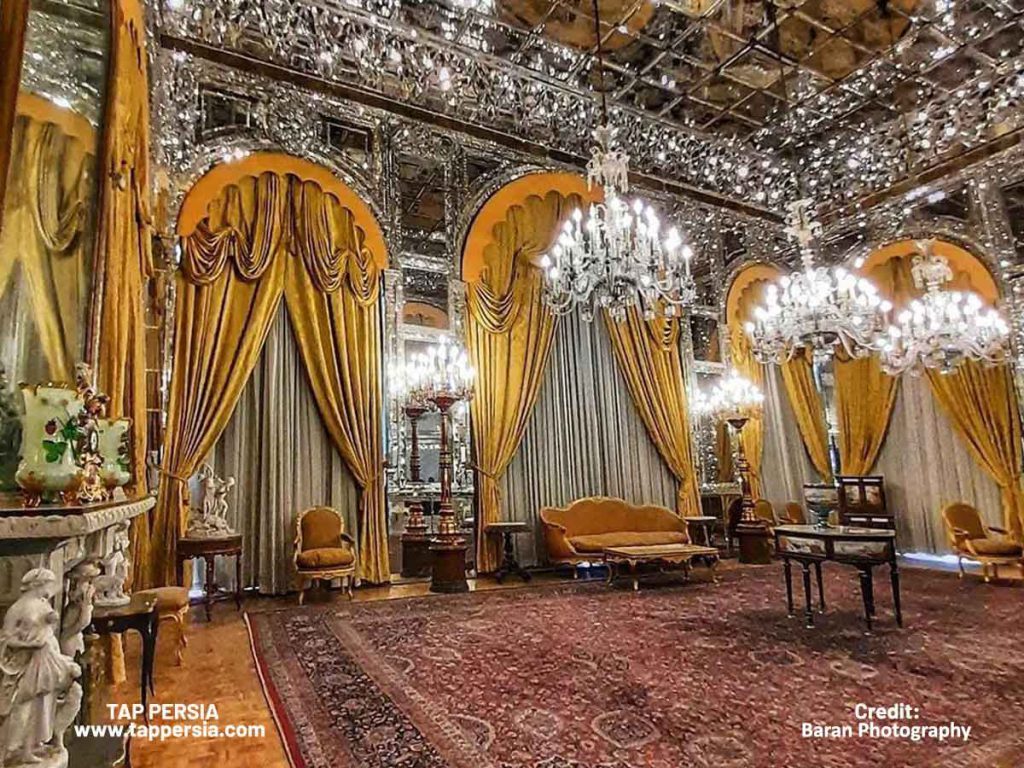
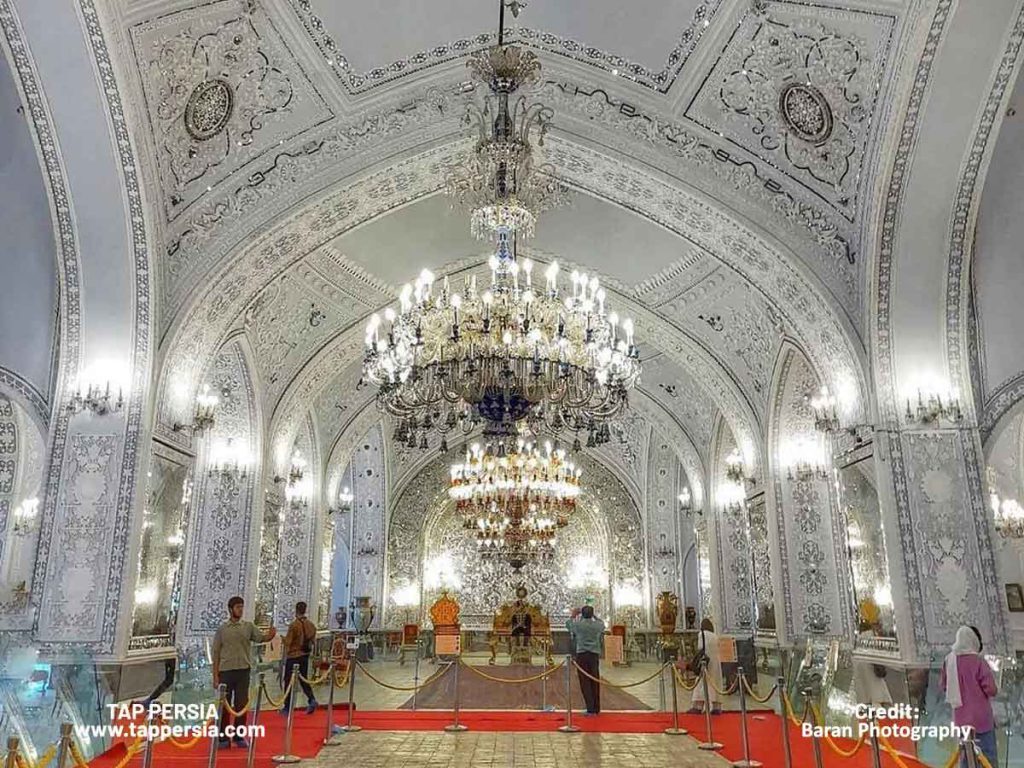
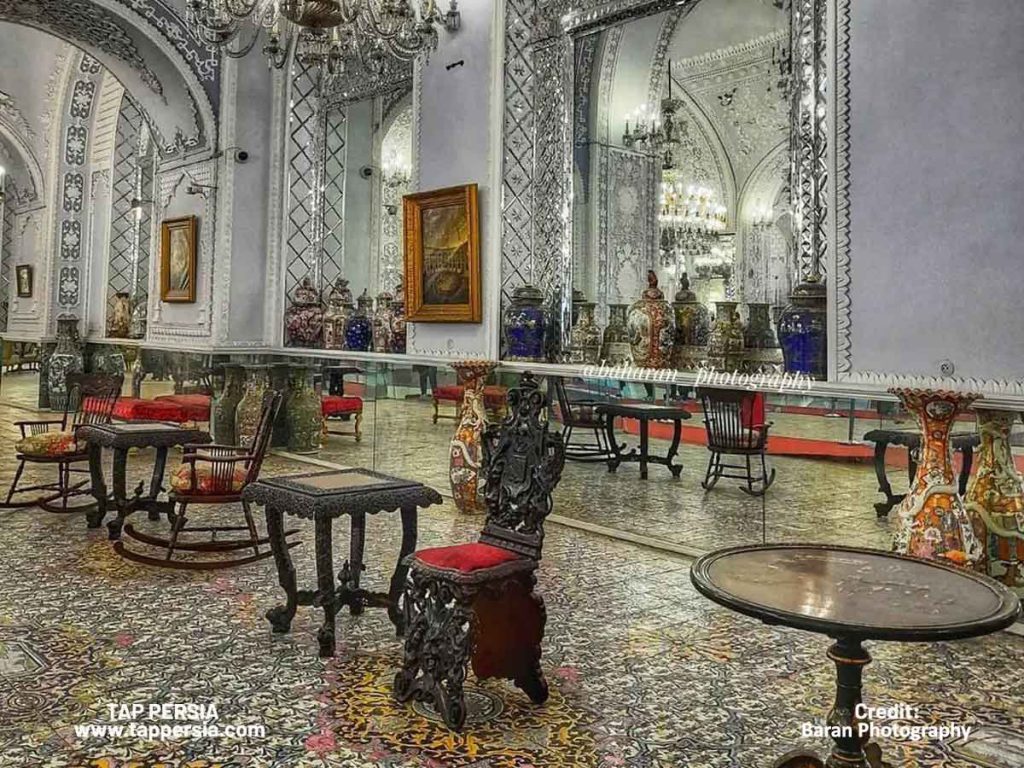
Gorgeous mirror work may be found in this hall. Plaster molding has been added to the walls and ceiling for decoration. Mosaics are present all over the flooring. In this hall, which was used to display paintings from Iran and Europe as well as presents given to the Persian court under Nasser-ol-Din Shah’s rule, were displayed during that time. Glass containers containing royal treasures were also on display. The Central Bank’s Royal Jewels Museum is currently where these gems are kept.
Location
Panzdah-e Khordad metro station is close to the Golestan Palace, which is situated in Tehran’s historic district. The Grand Bazaar, the National Museum of Iran, the Negarestan Garden, Masoudieh Palace, the National Jewelry Museum, and many more well-known tourist attractions are all close to the palace. Including Golestan Palace in your daily trip to Tehran will thus be simple. In spite of the fact that we think it ought to be the first attraction you think about viewing while in Tehran.
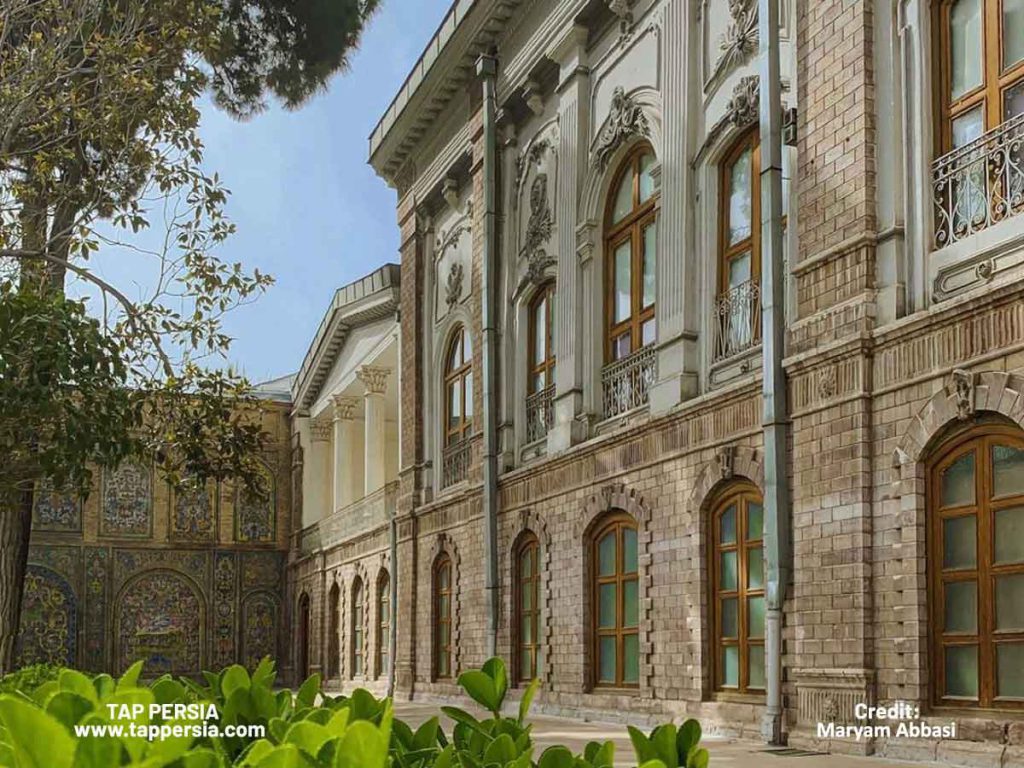
Where to Stay Near Golestan Palace?
Golestan Palace is surrounded by a large number of hotels because of its prime position. The most opulent, freshly constructed hotel is Hanna Boutique Hotel, which may be the greatest option if you’re traveling to Tehran.
1.Try the one-star Mehr Hotel, the Tehran Arian Hostel, or the Samen Hotel if you’re on a tight budget; they’re all close by and accessible on foot. Golestan Hotel, Markazi Iran Hotel, and the
2-star Shahryar Hotel all provide comfortable accommodations. Visit the Ferdowsi Grand Hotel for additional luxurious accommodations.
How Do I Travel There?
The Golestan Palace may be reached in a number of ways:
1.By metro
The Panzdah-e Khordad metro stop on the red line is the nearest one. A few minutes will be needed to walk from the subway to Golestan Palace.
2.By bus
Golestan Palace can be reached by foot in 10 minutes from Qurkhane Bus Station. This station is served by buses from several locations across the city.
3-On foot
A short distance from the Grand Bazaar, City Park, National Museum, and other attractions lies Golestan Palace. You may have a lovely stroll to the palace if you are a guest at one of them.
Why is Golestan Palace famous?
As a result, Golestan Palace may be regarded as an excellent illustration of an east-west synthesis in monumental arts, architectural design, and construction technology, which has served as a source of inspiration for contemporary Iranian artists and architects.
Who lived in Golestan Palace?
Tehran served as the seat of government during the Qajar dynasty’s Agha Mohammad Khan (1742–1797). The arg was used as the Qajars’ residence (1794–1925). The official home of the Qajar dynasty was the Golestani court and palace. Haji Abdullah Hasan Mimar Navai restored the palace in 1865 to take on its present appearance.
What is a fun fact about Golestan Palace?
Under Fath Ali Shah Qajar’s direction, the magnificent terrace of Tehran’s Golestan Palace was constructed in 1806. Yazd’s renowned yellow marble was used to create the Marble Throne, also known as Iwan, which stands in the center of the terrace. Mirza Baba Naqash Bashi created it, and it is composed of 65 marble pieces.
How much is the entrance fee to Golestan Palace?
One million Rials is required to visit the complex garden of Golestan Palace, which is included in the admission charge. Additional tickets for several palaces, venues, and museums are available. Except for the main palace, which has a 2,000,000 Rial entry charge, all of the complex’s museums and homes have admission fees of 500,000 Rials.




Comment (0)